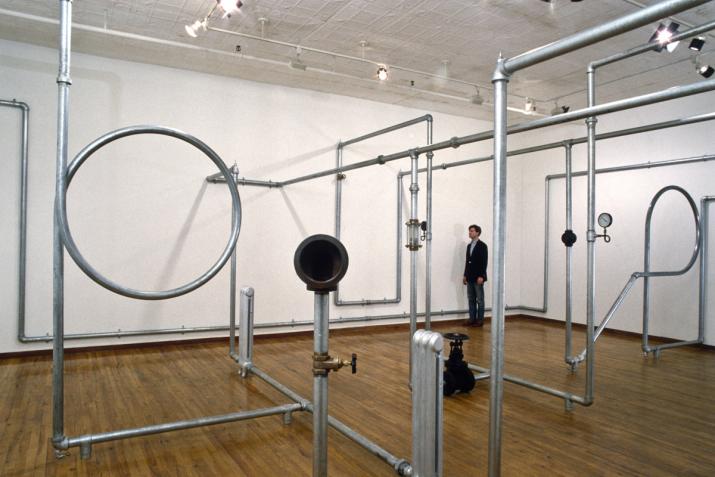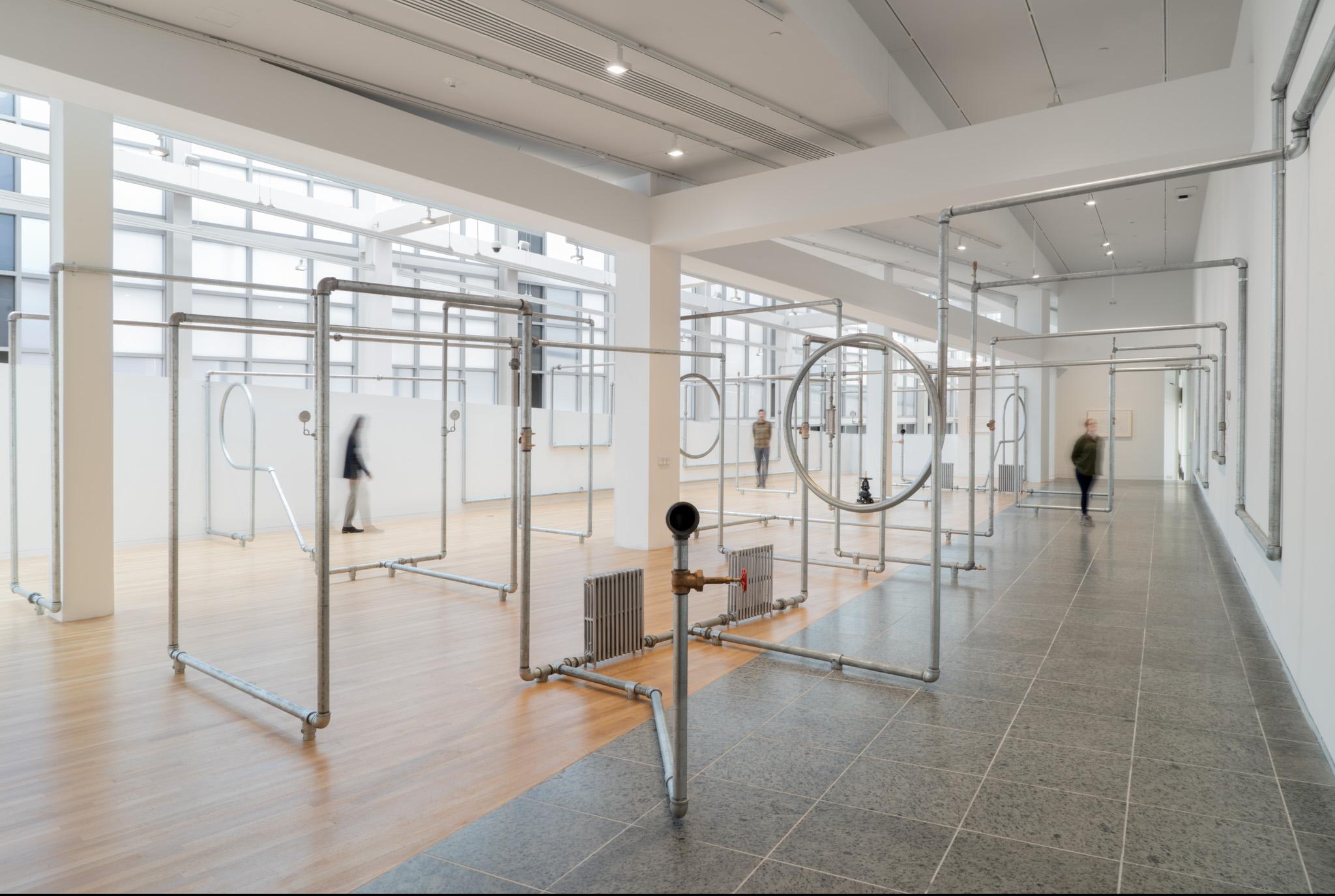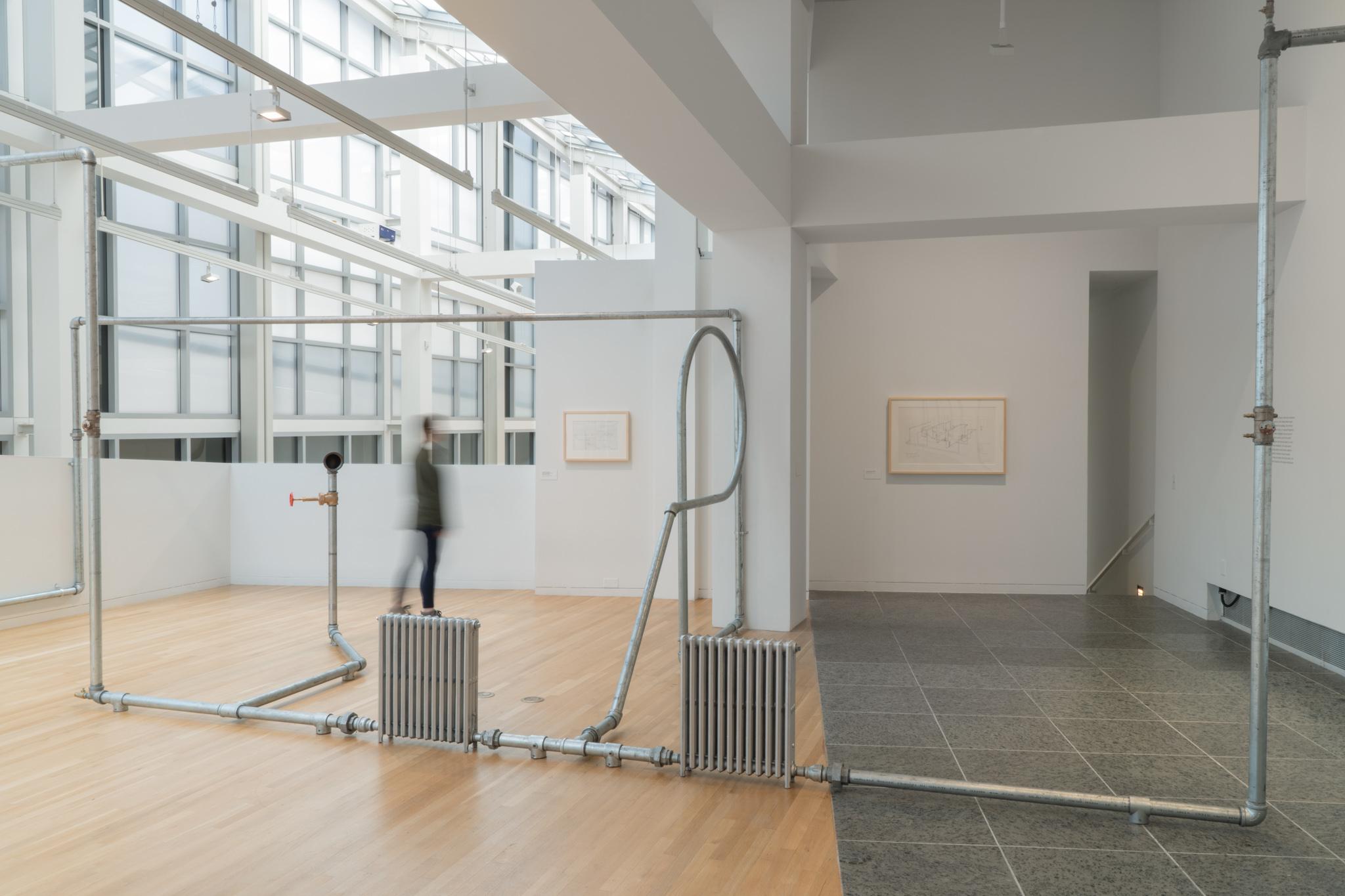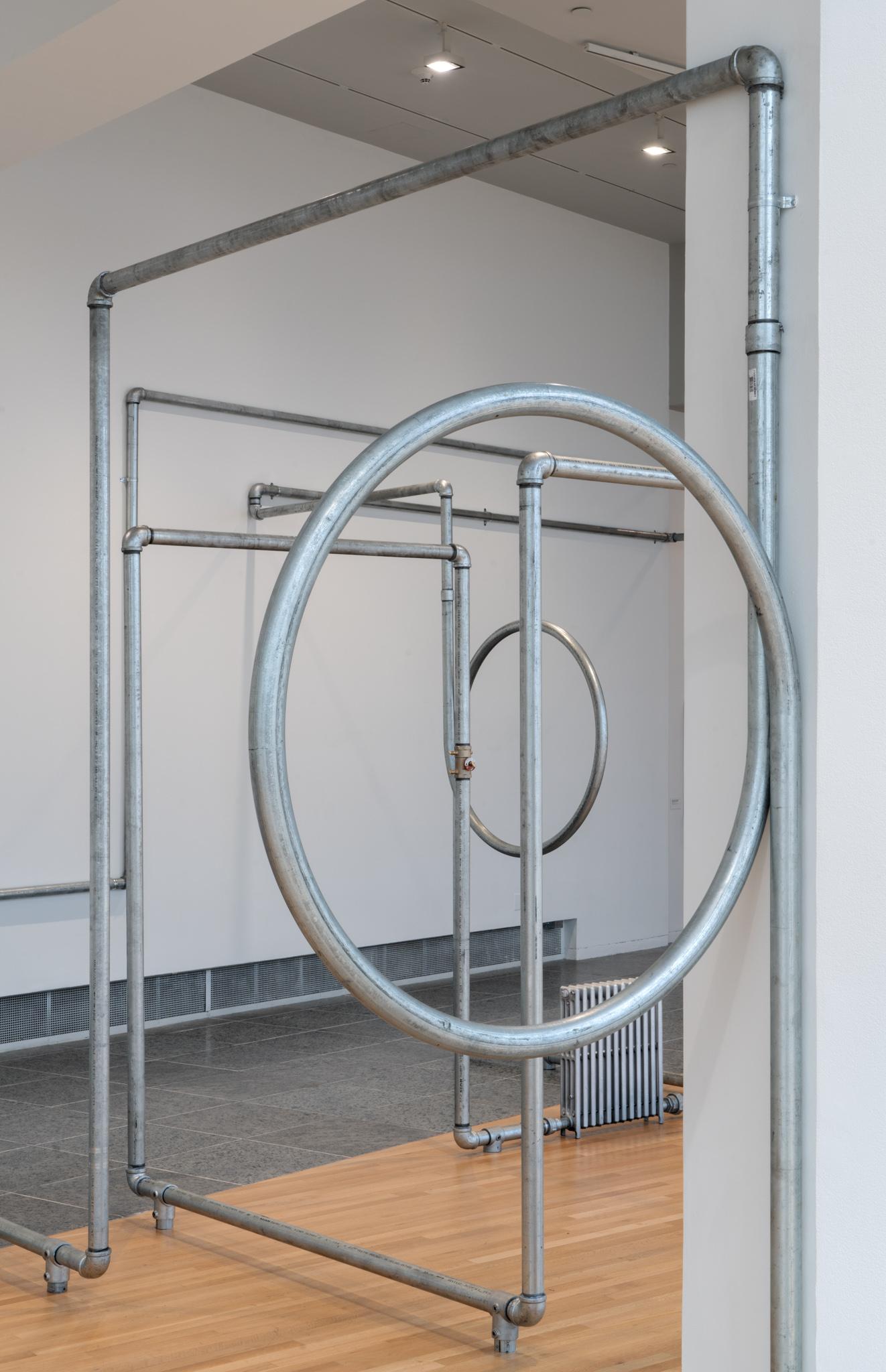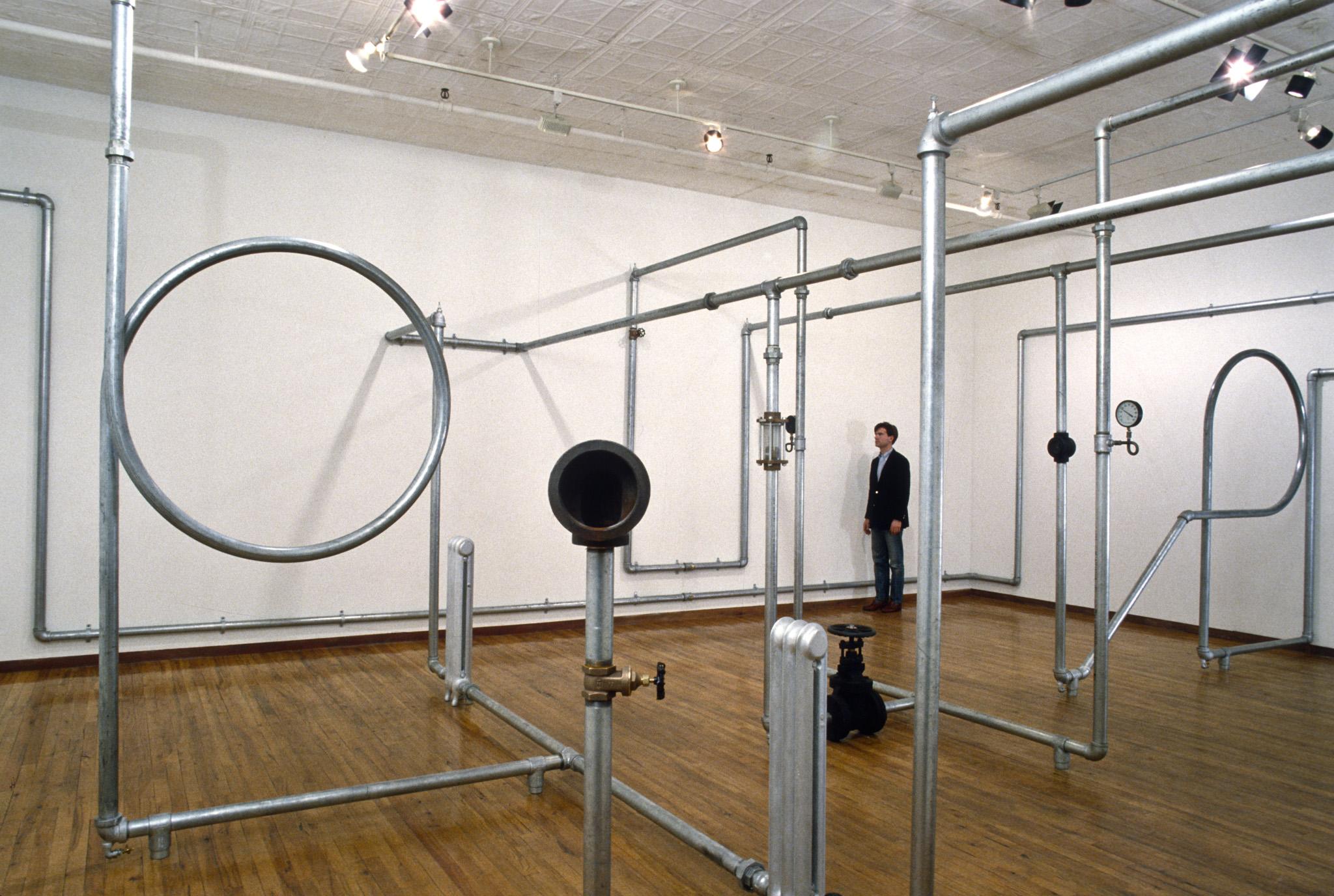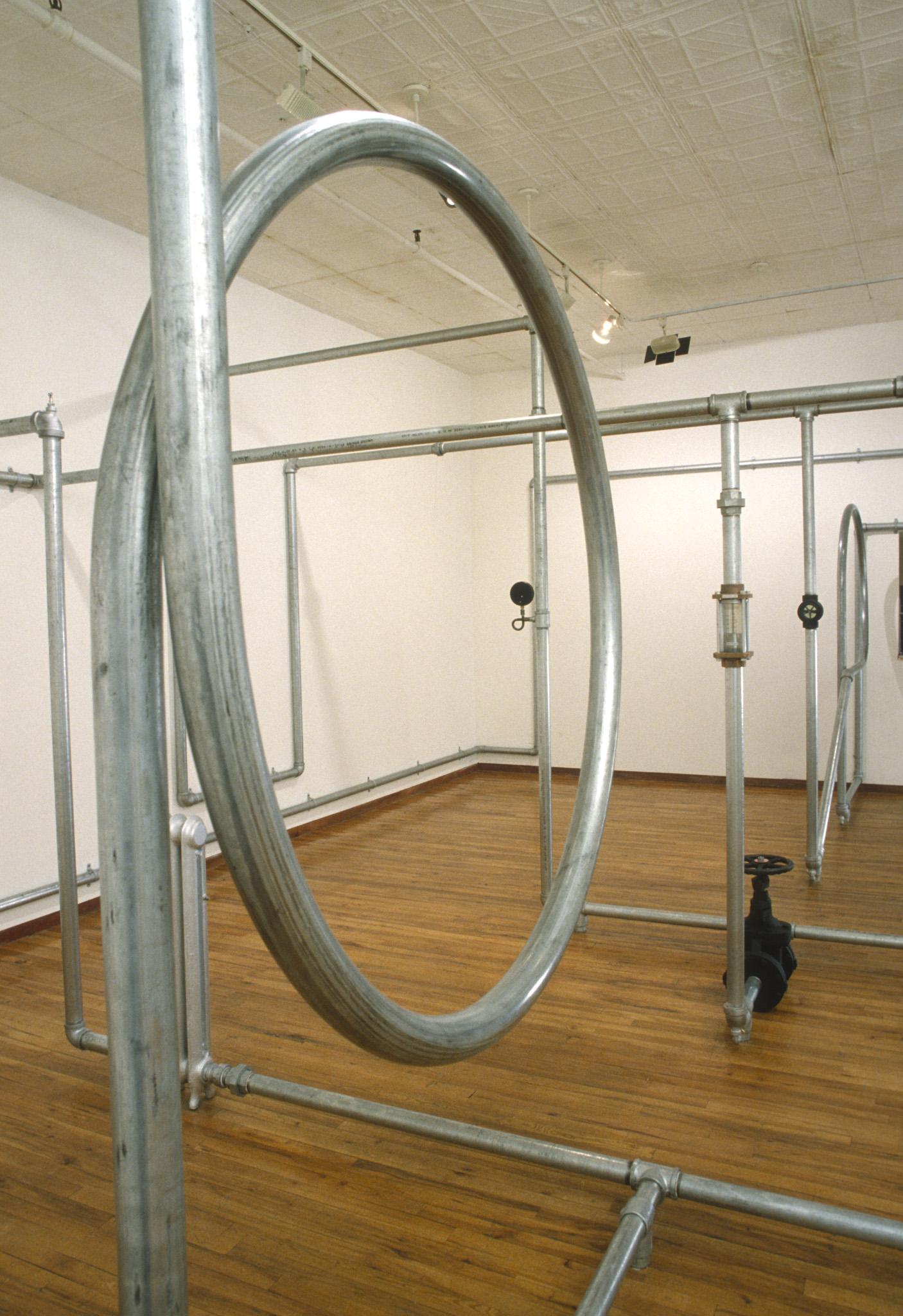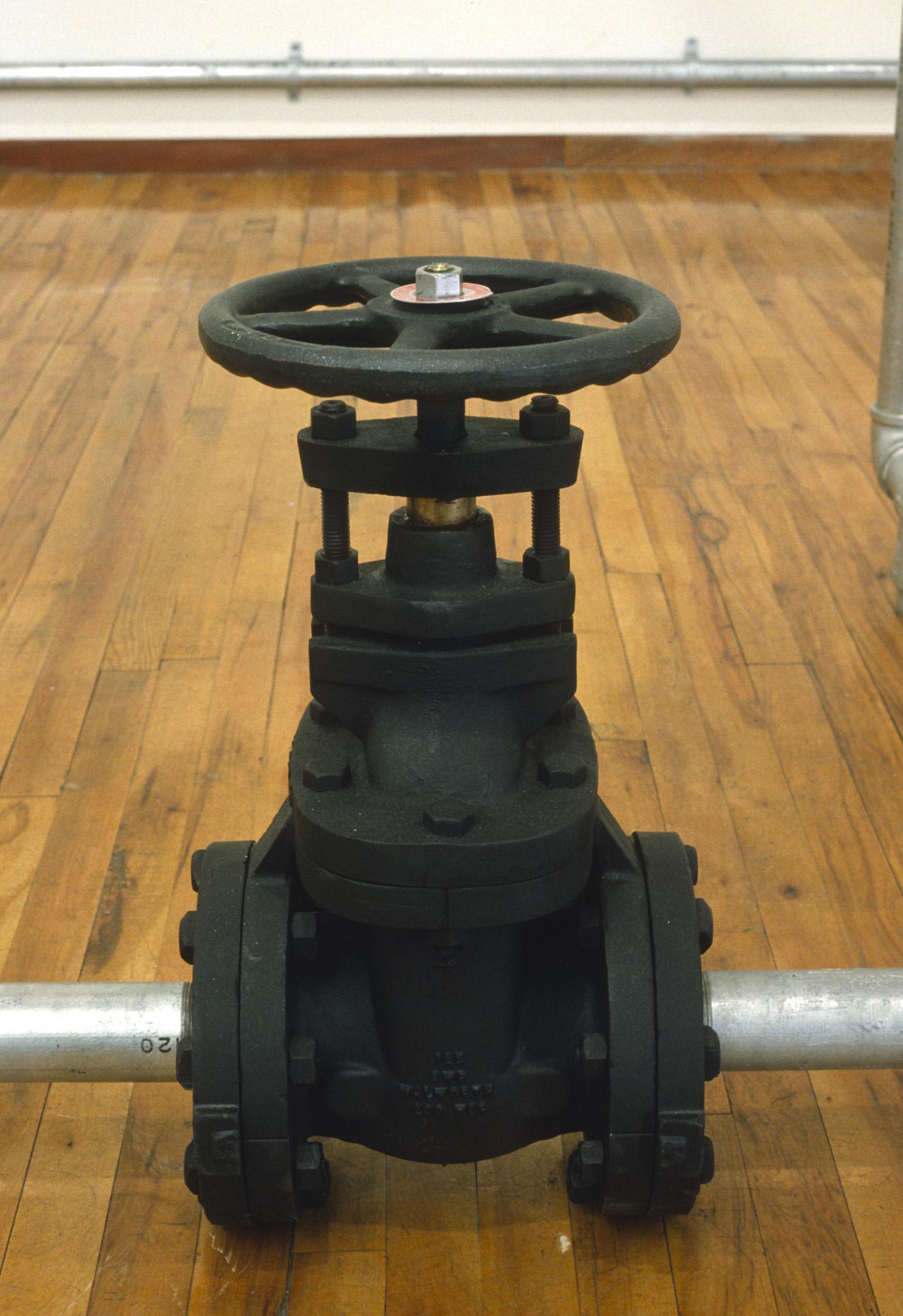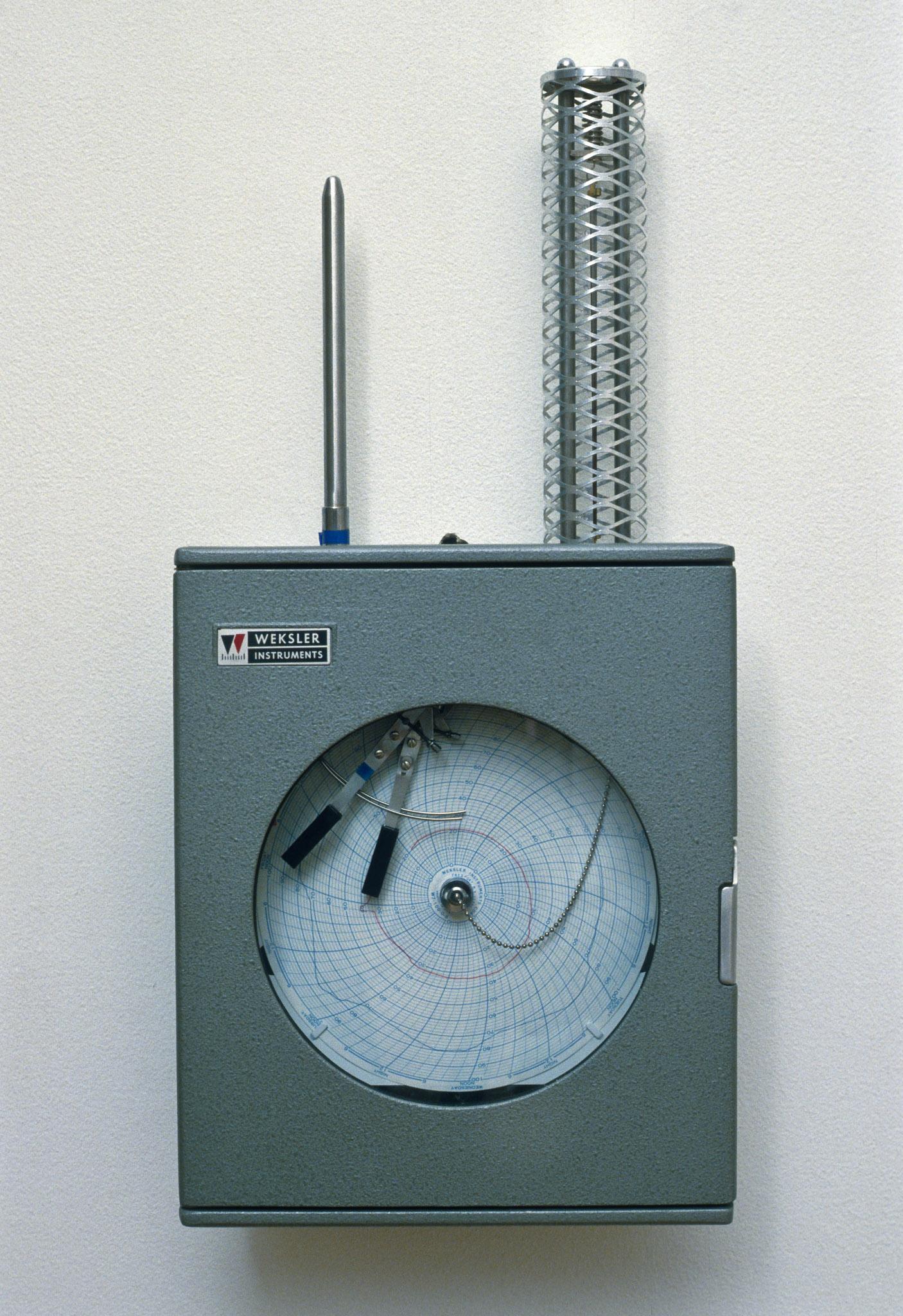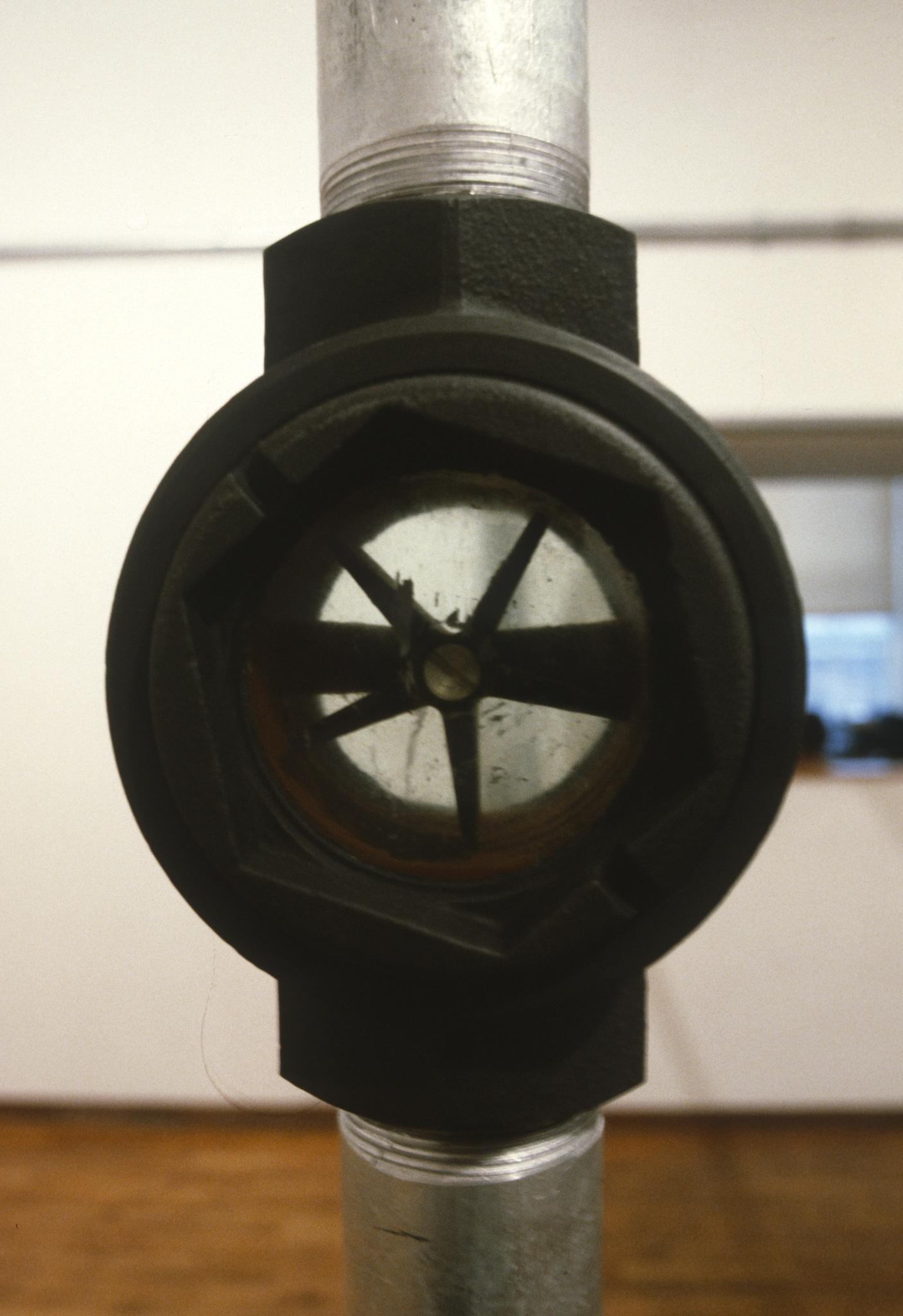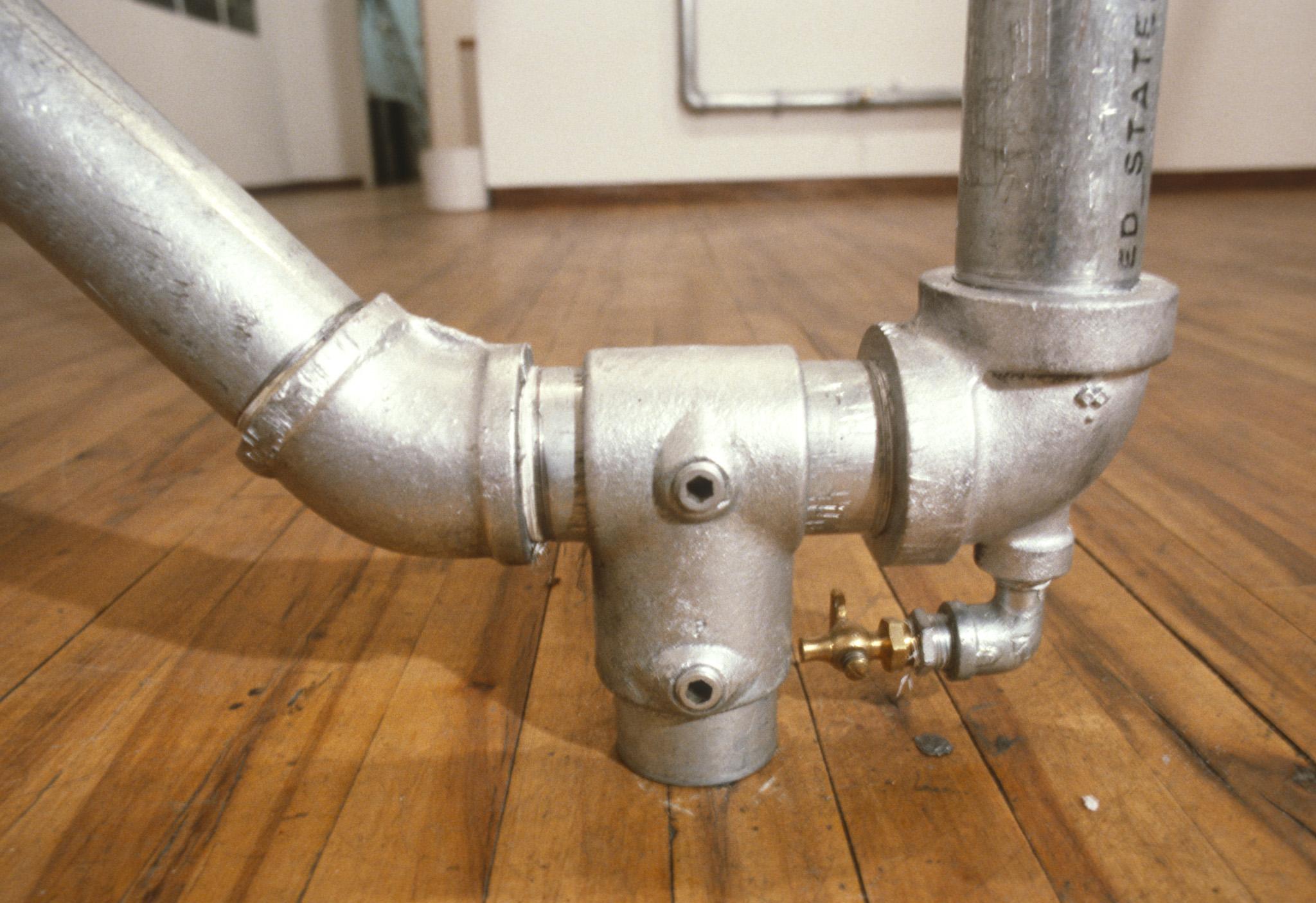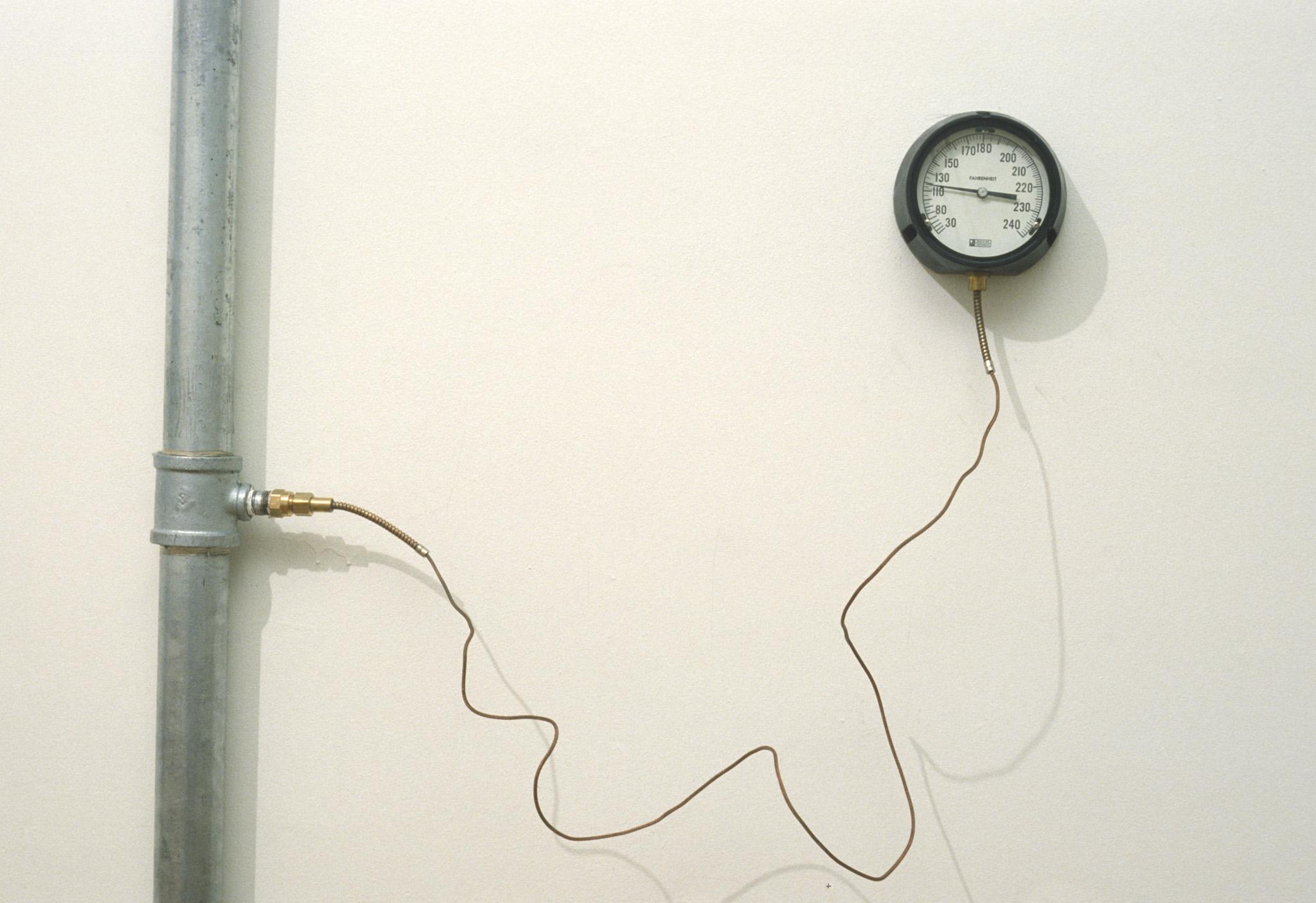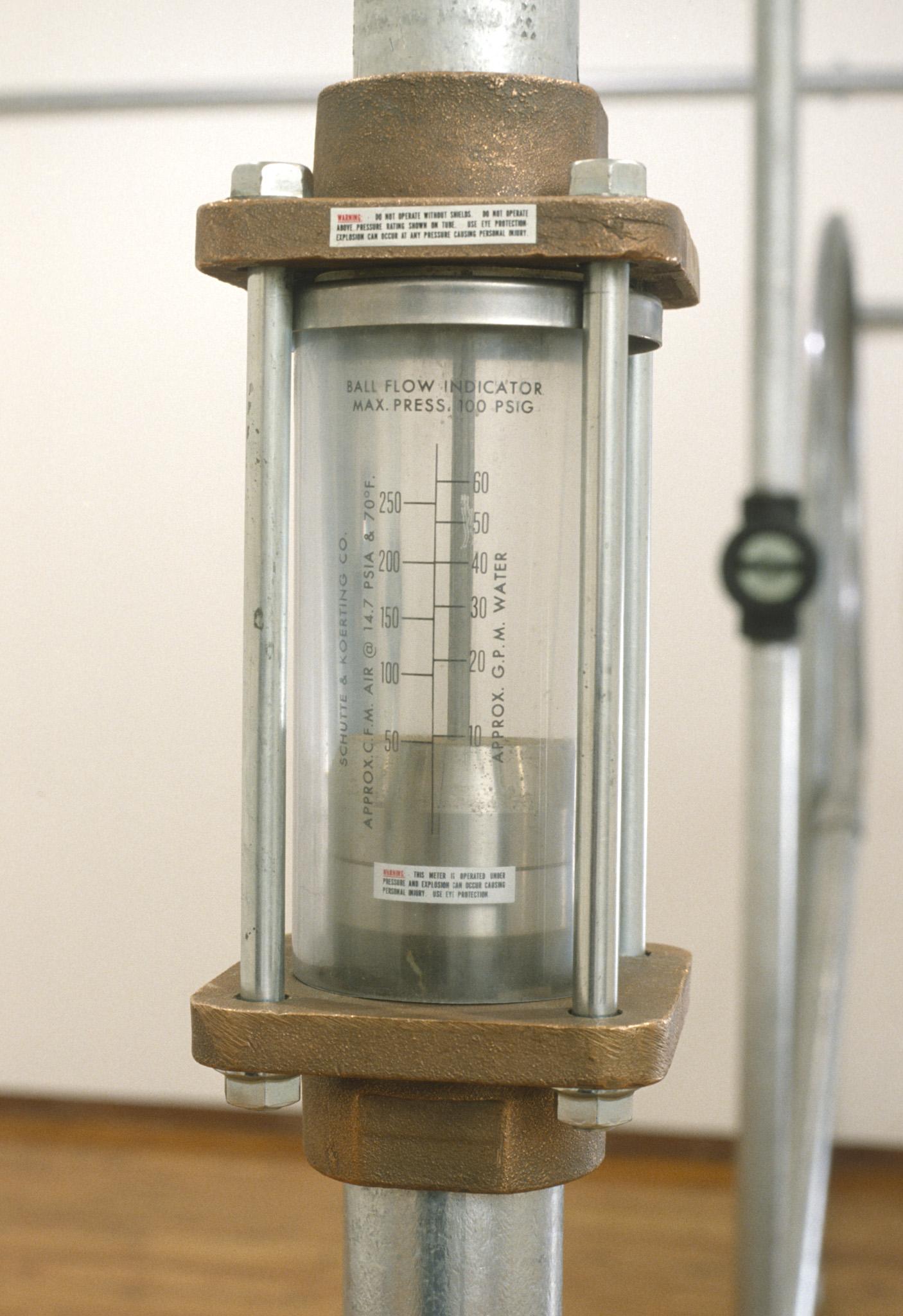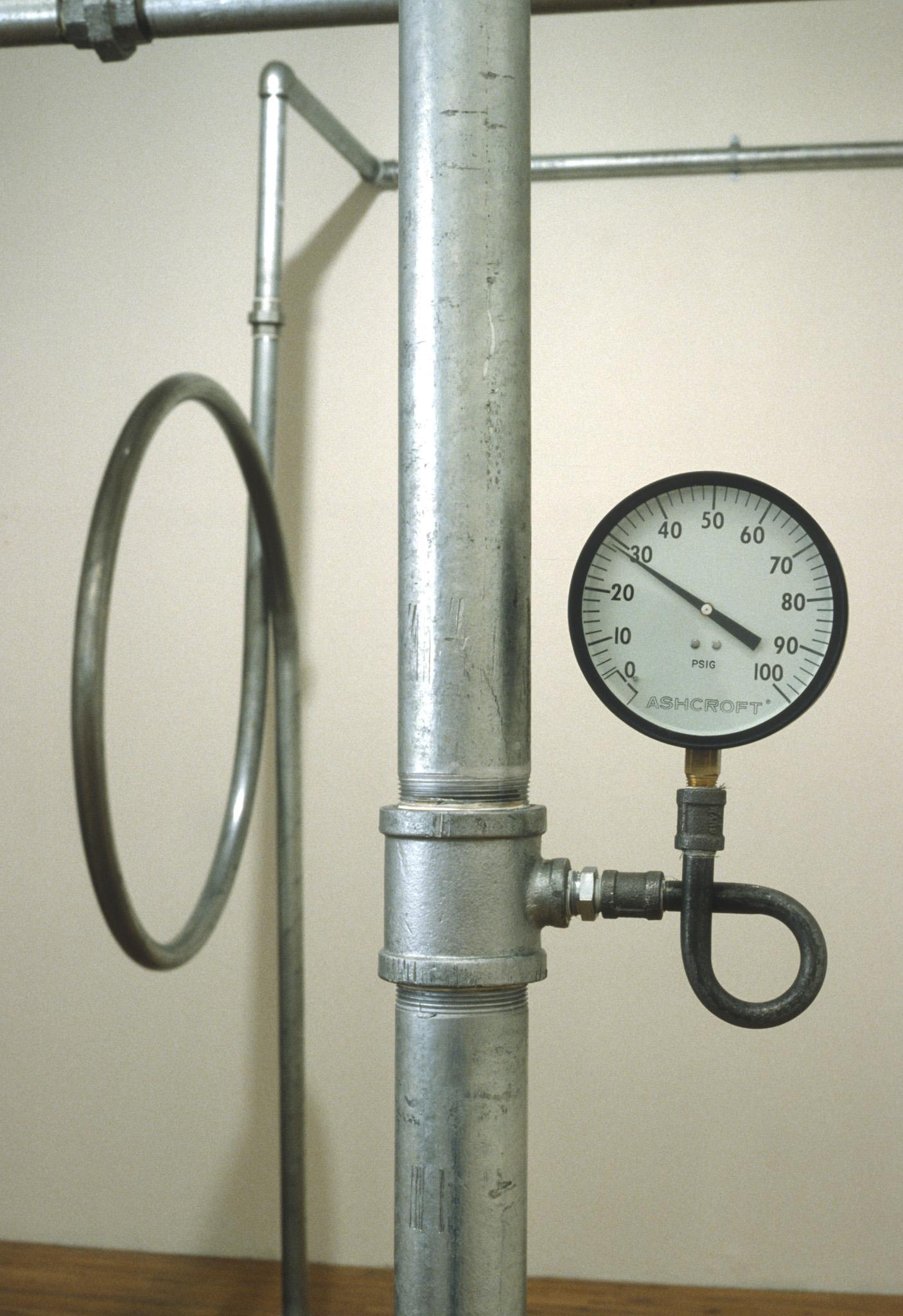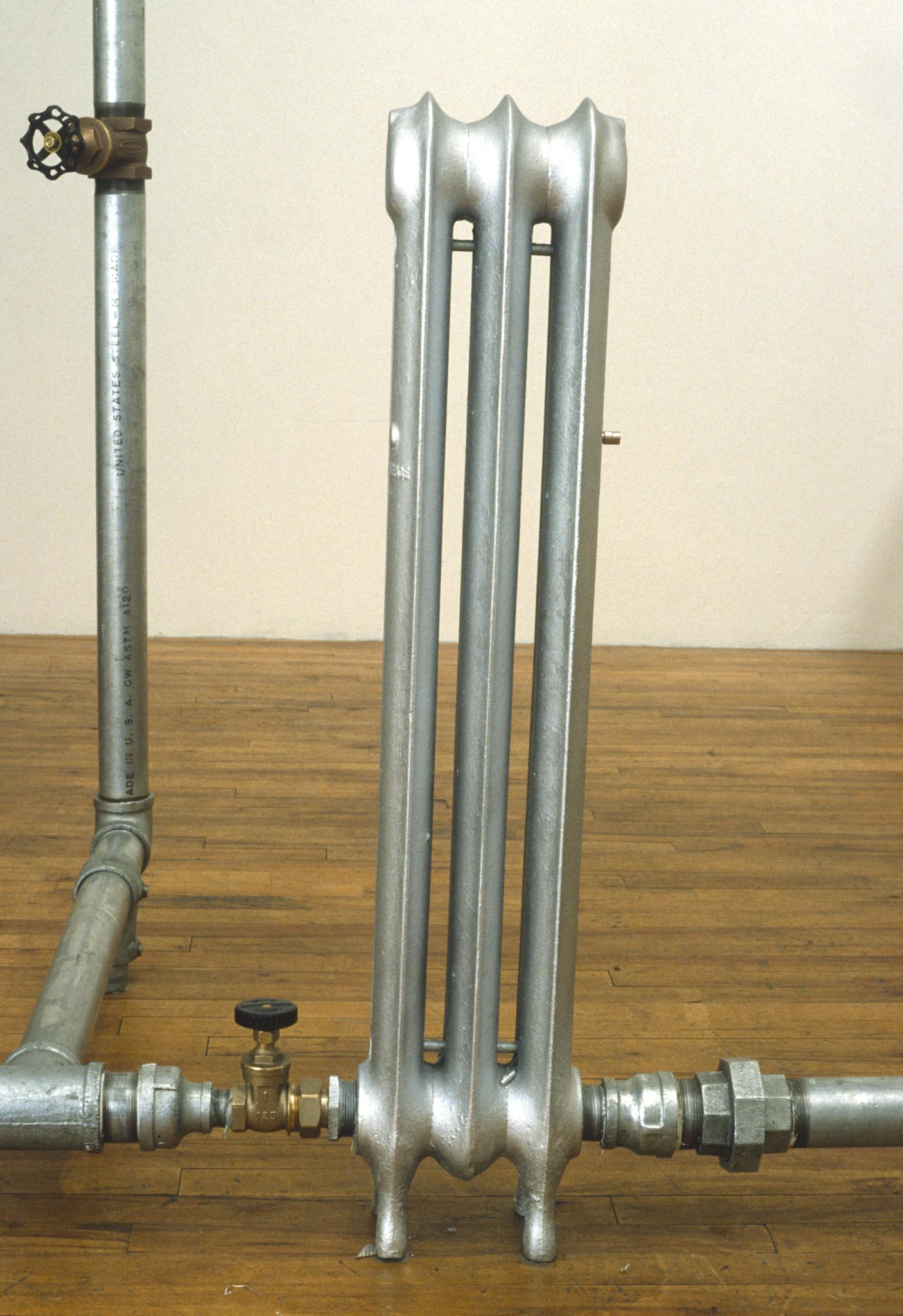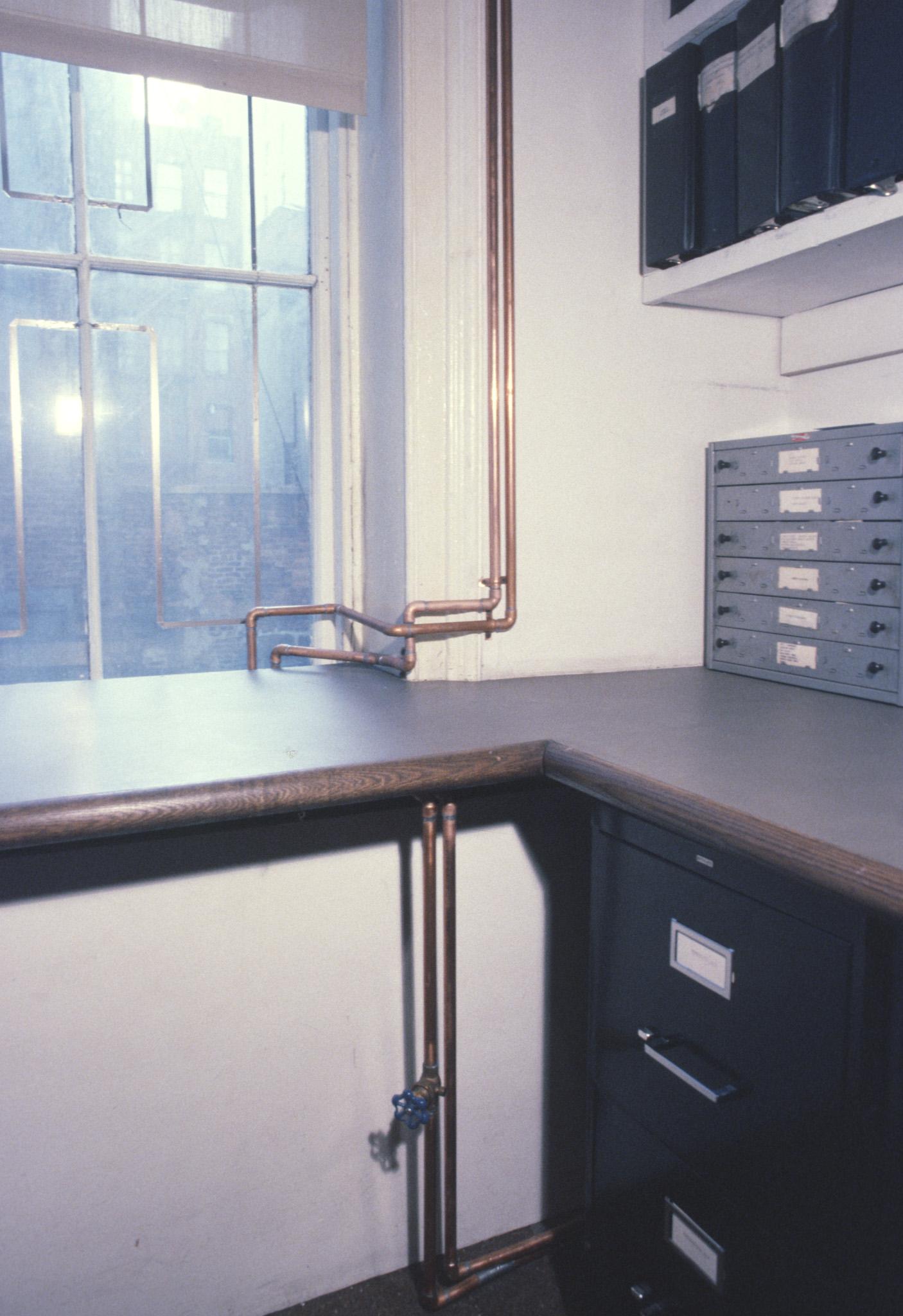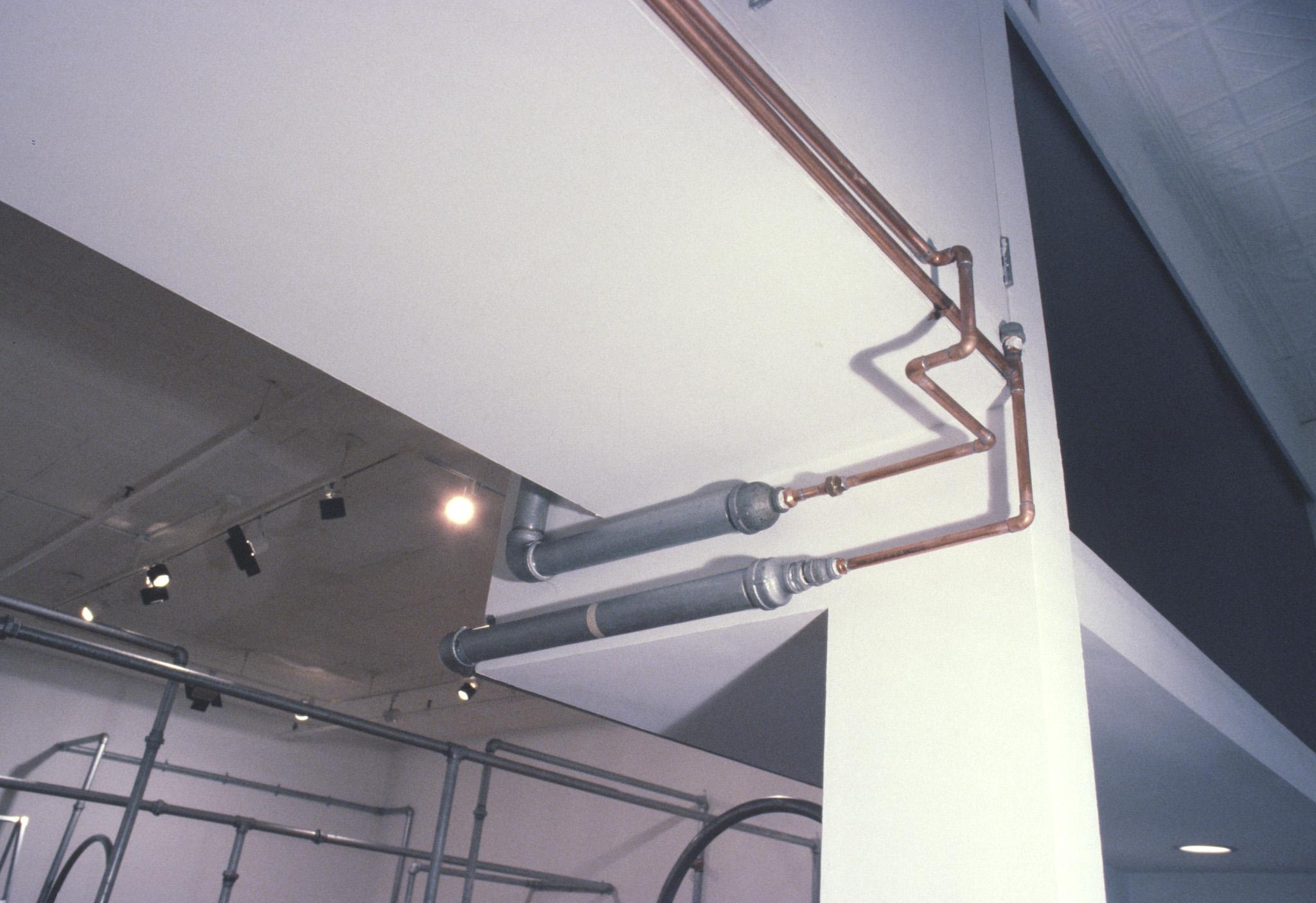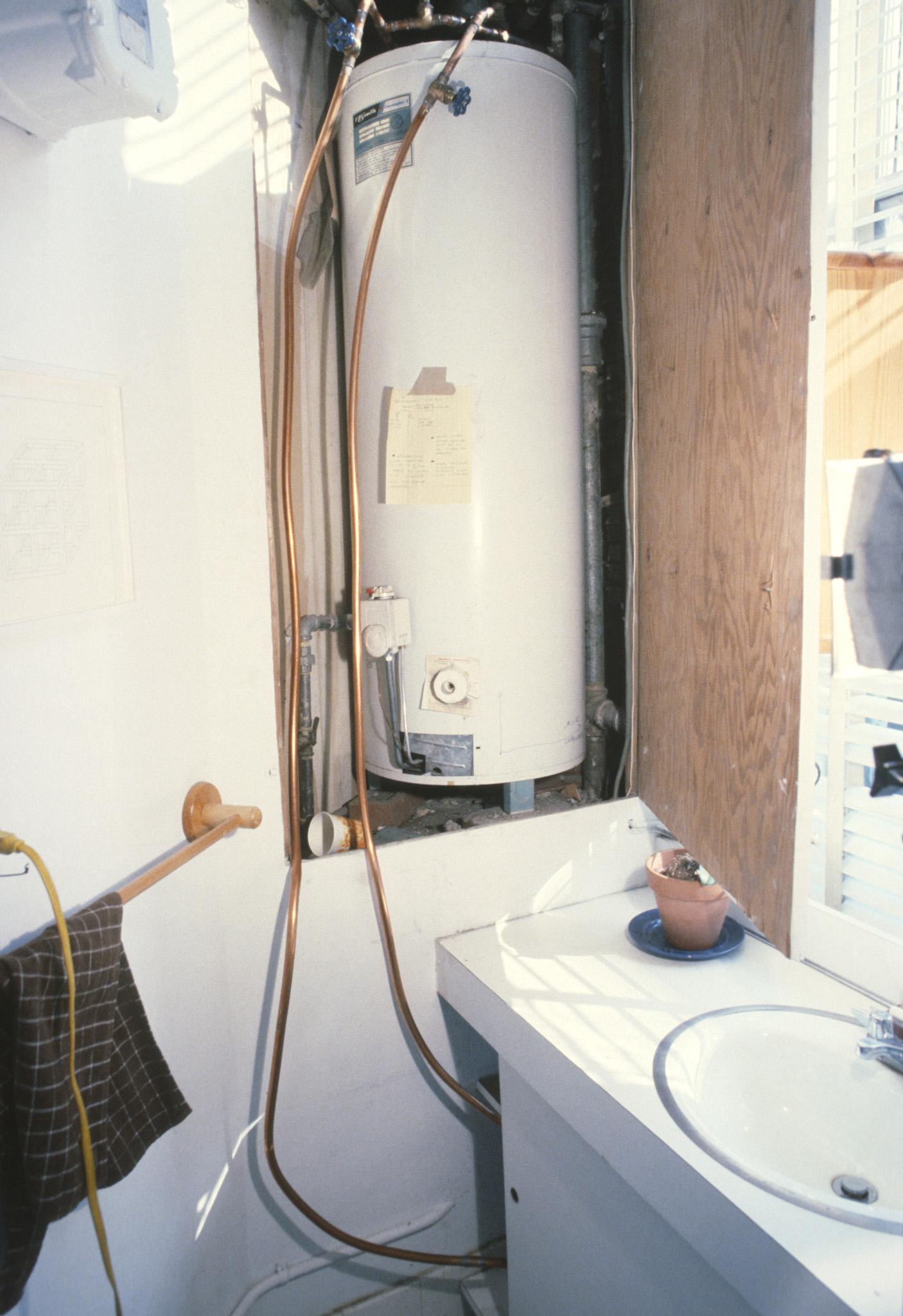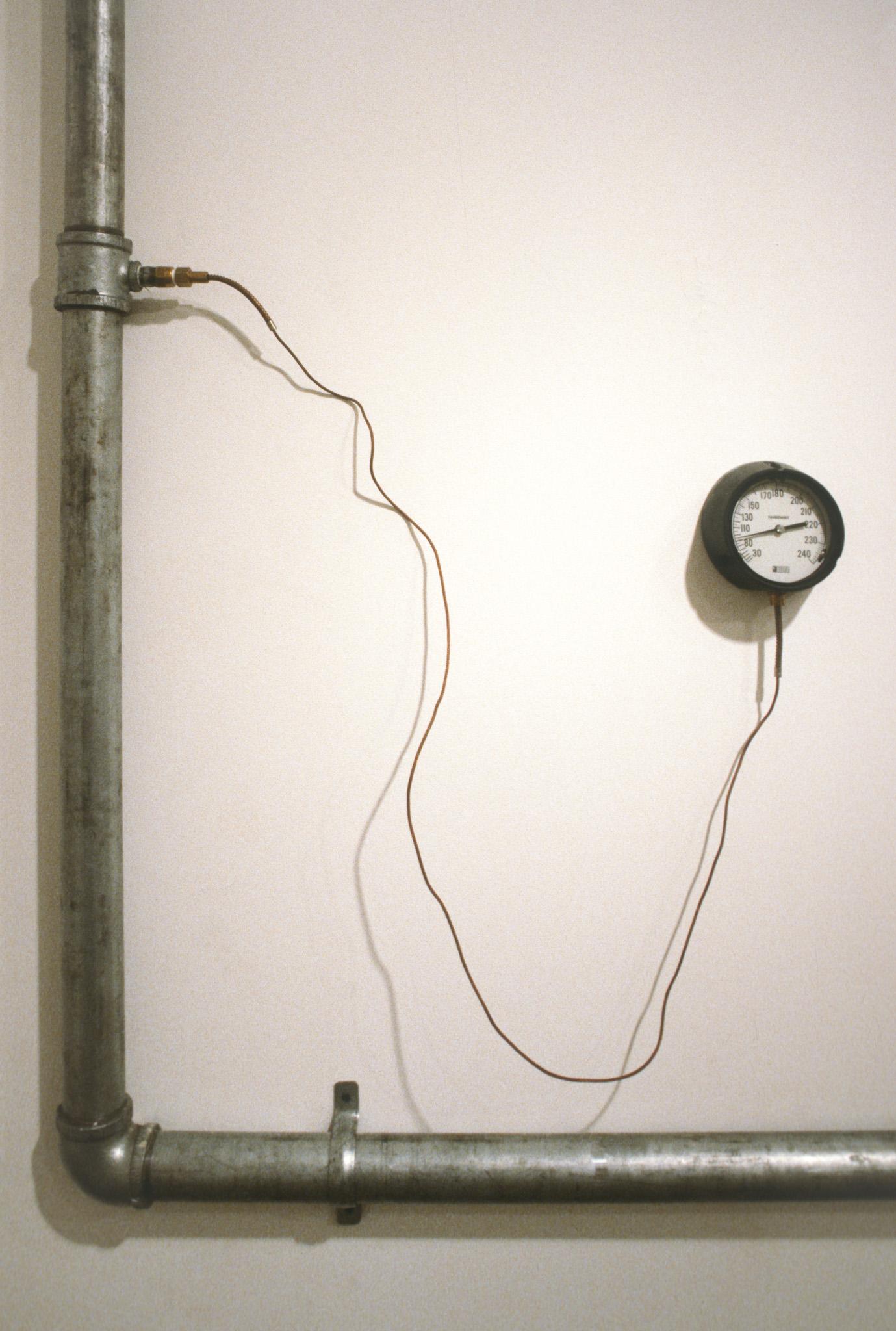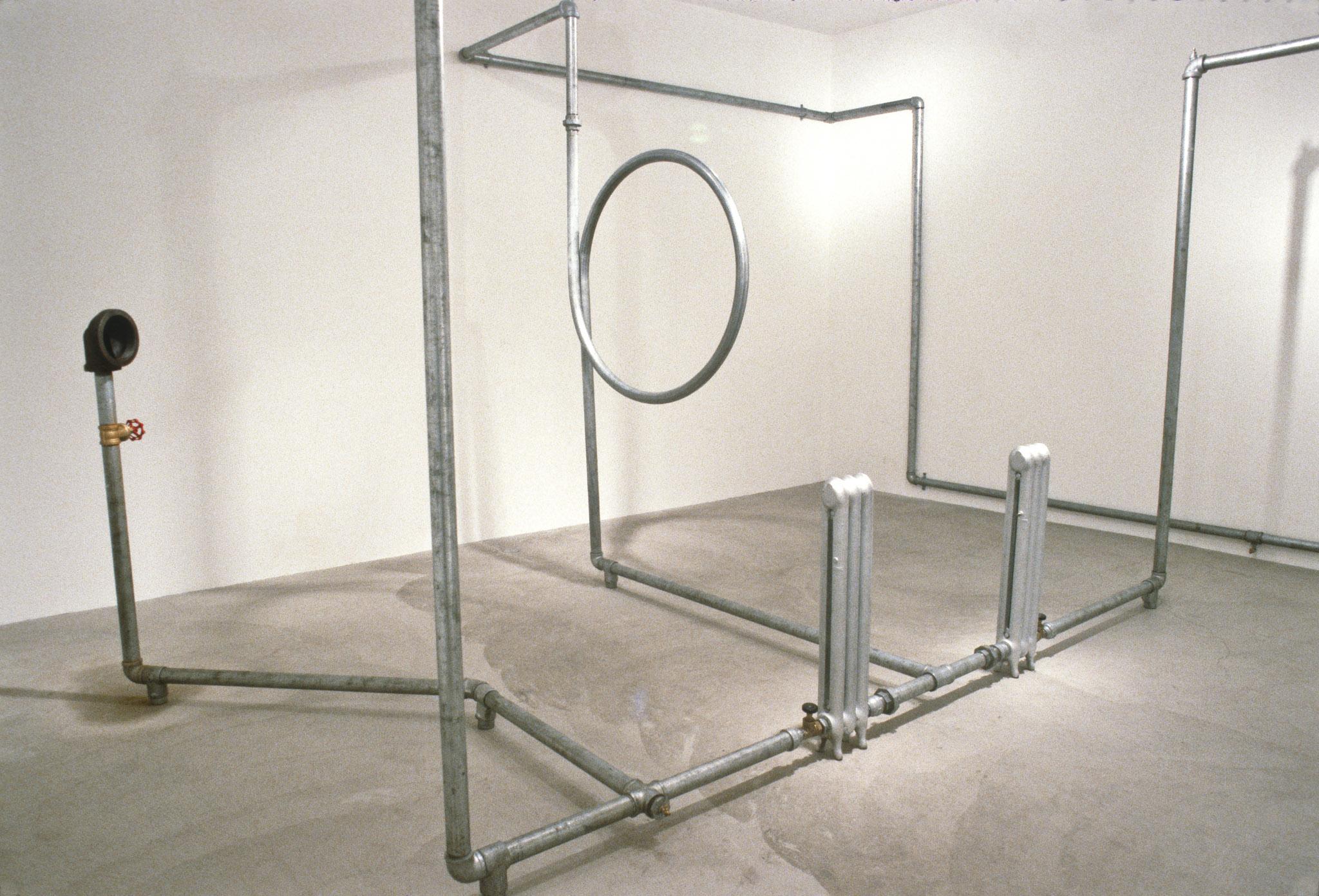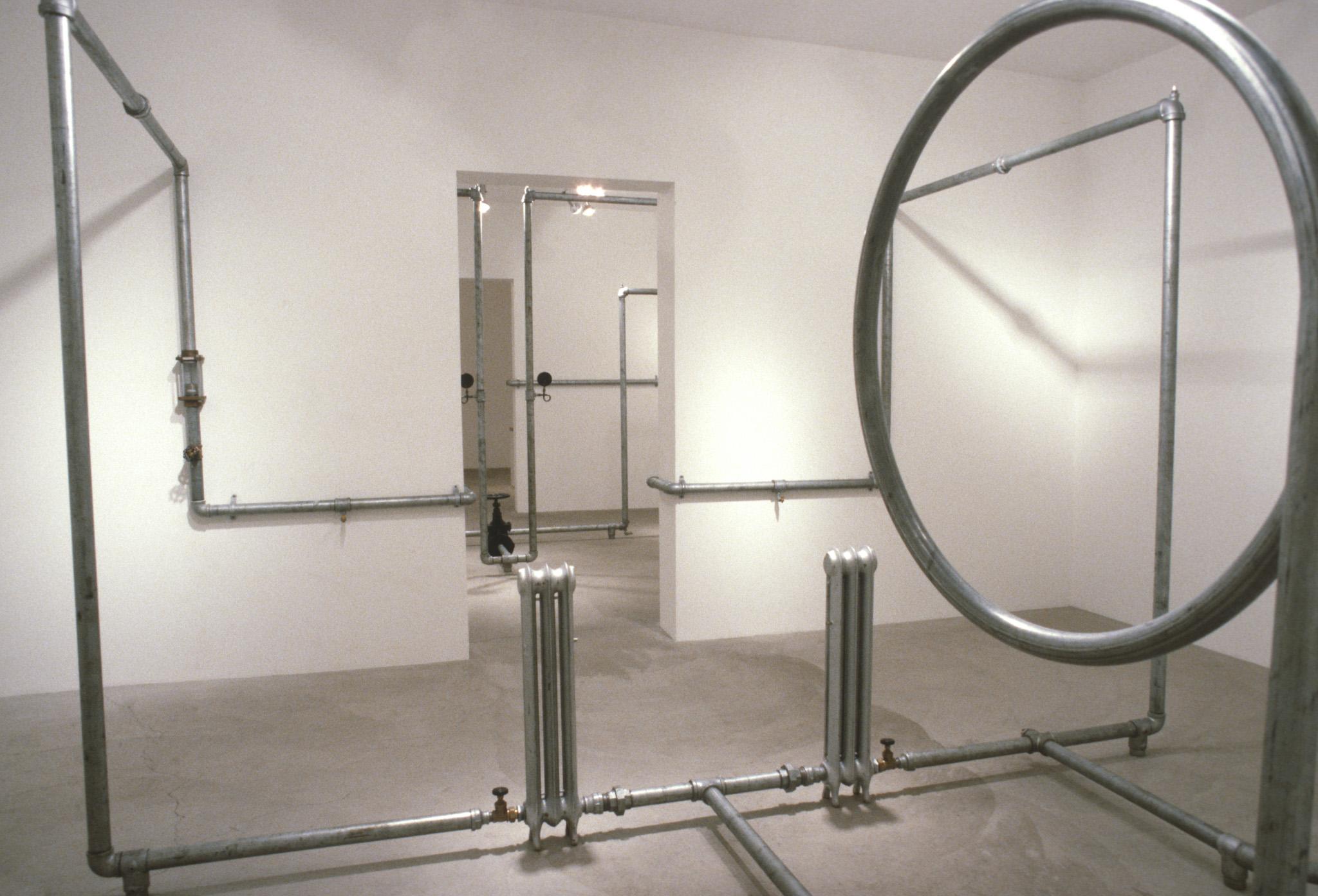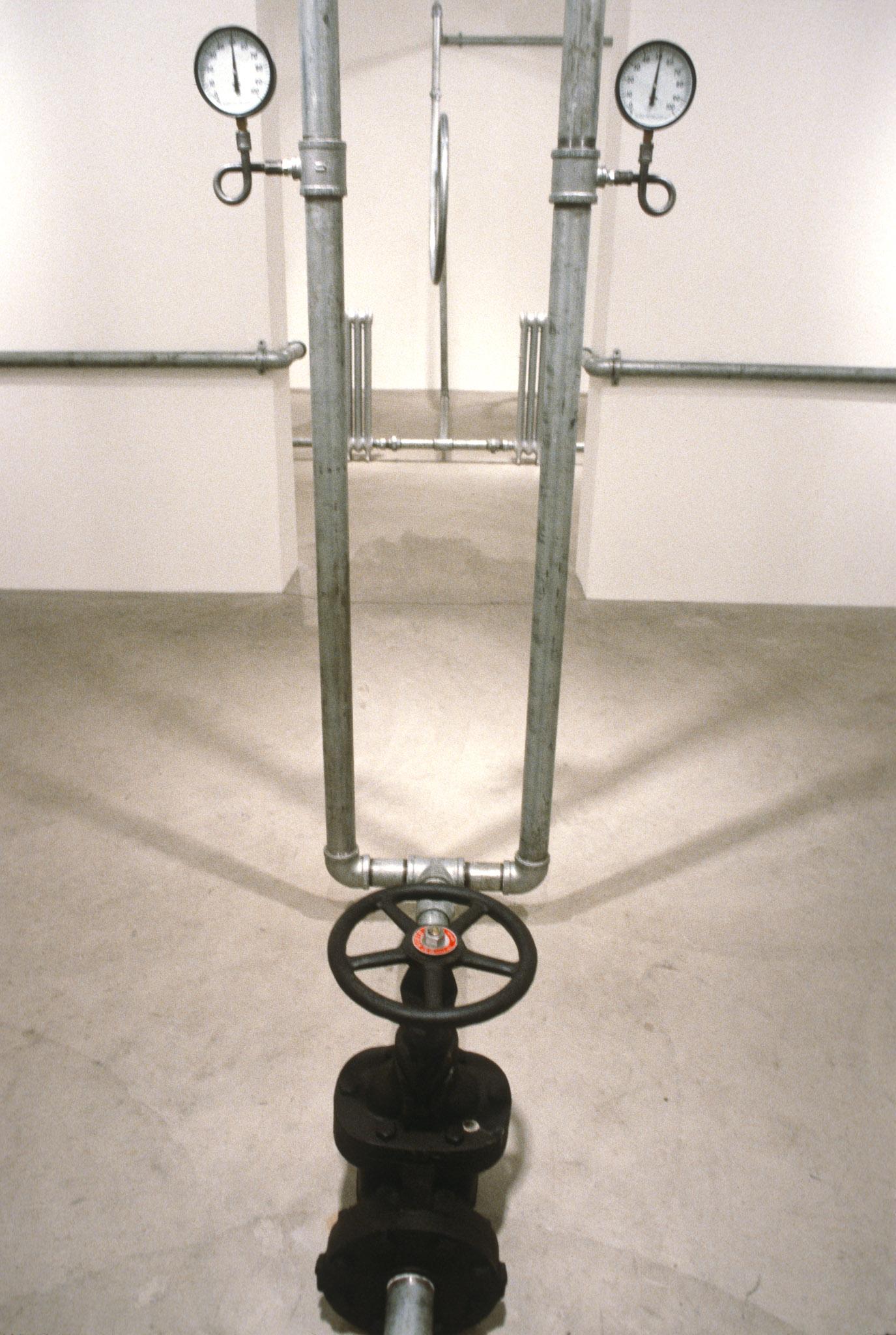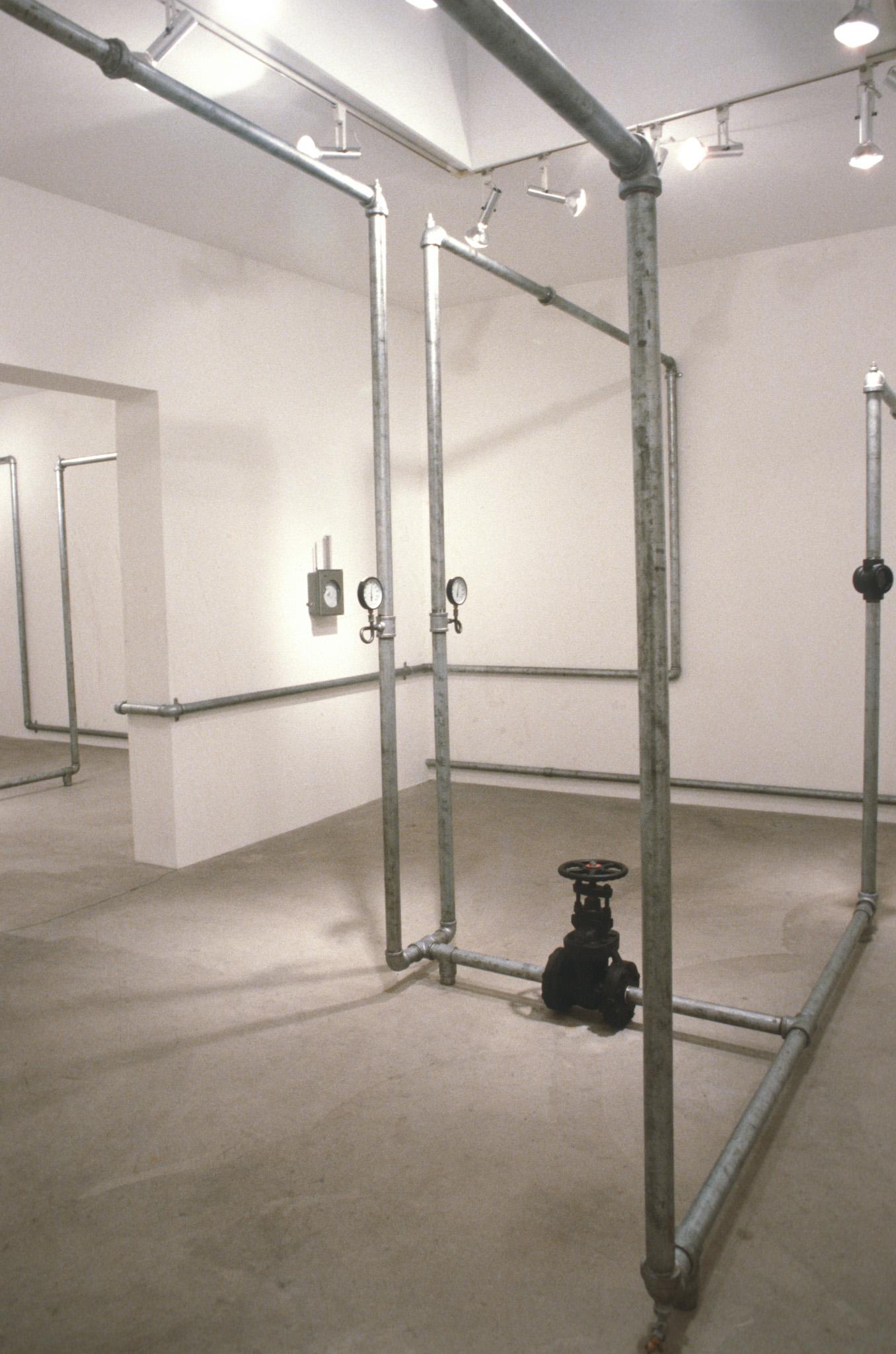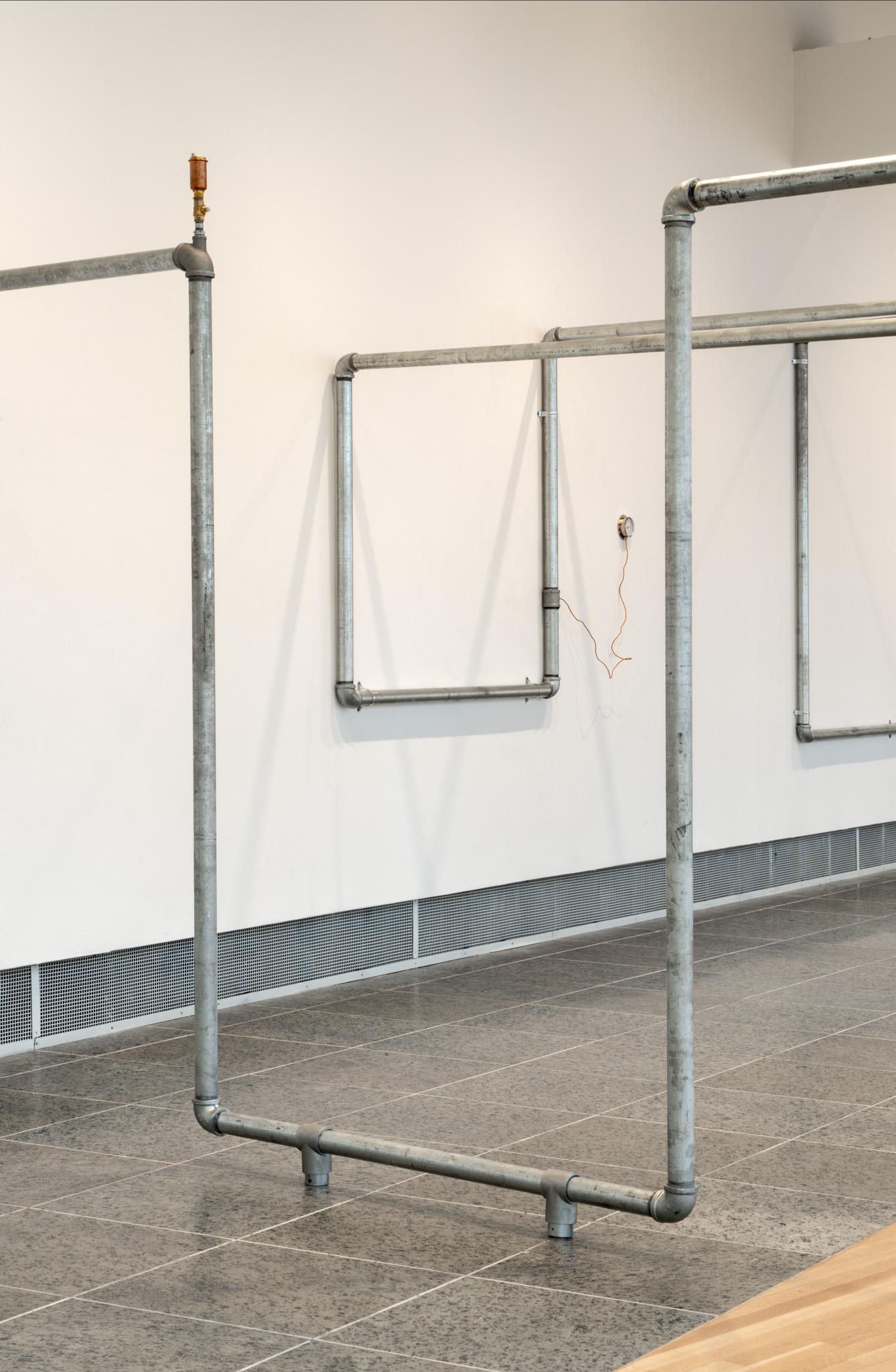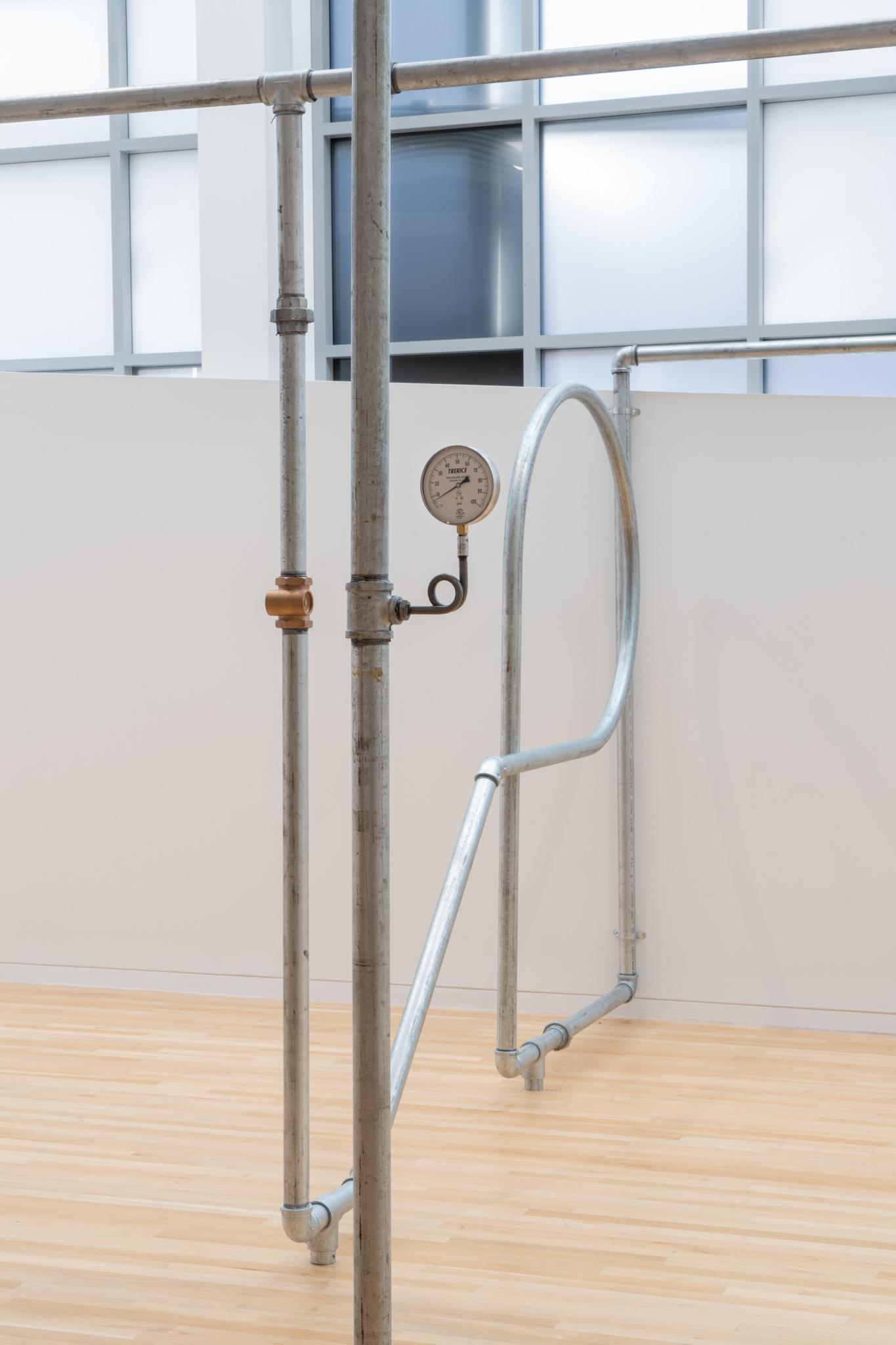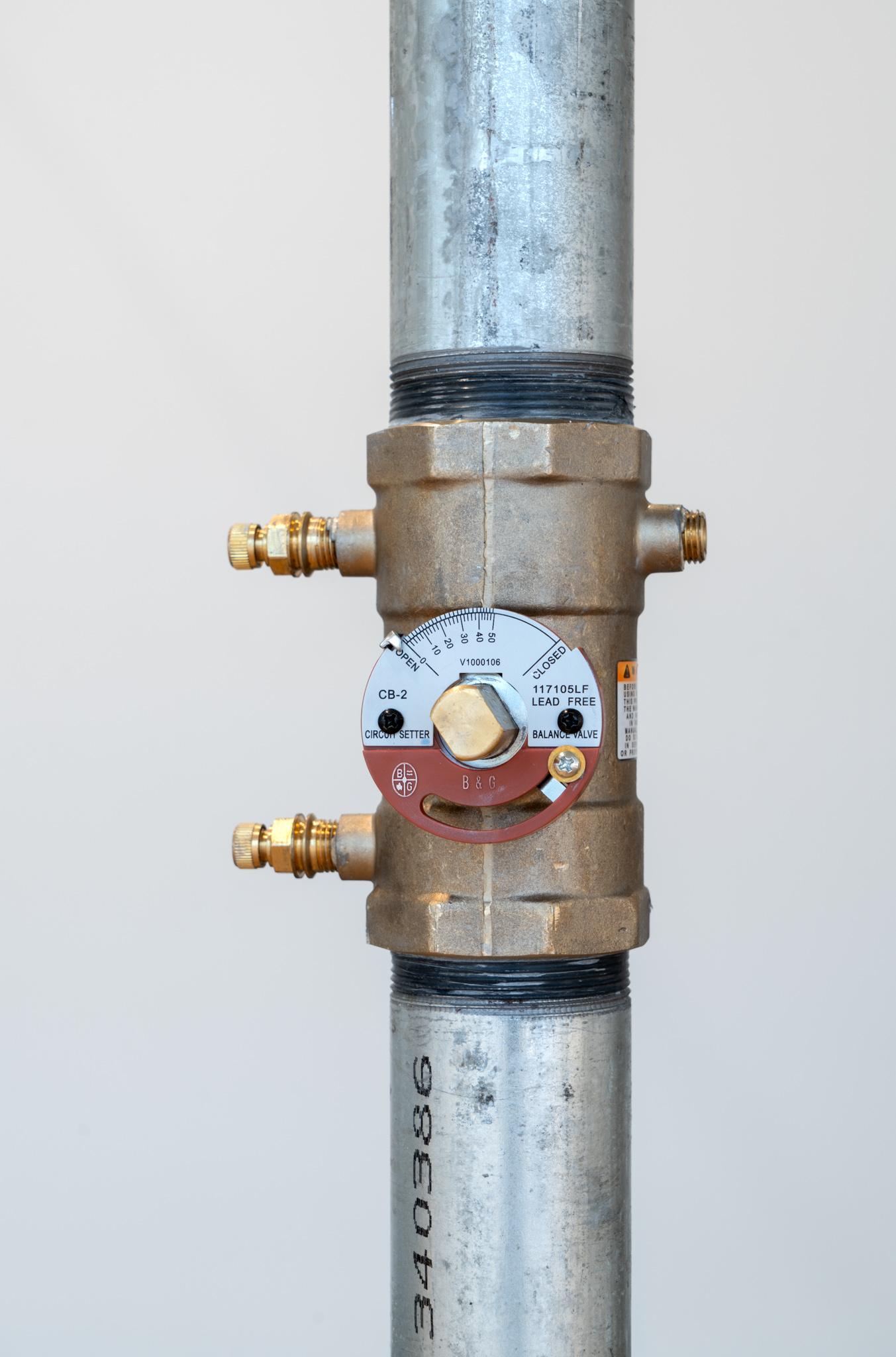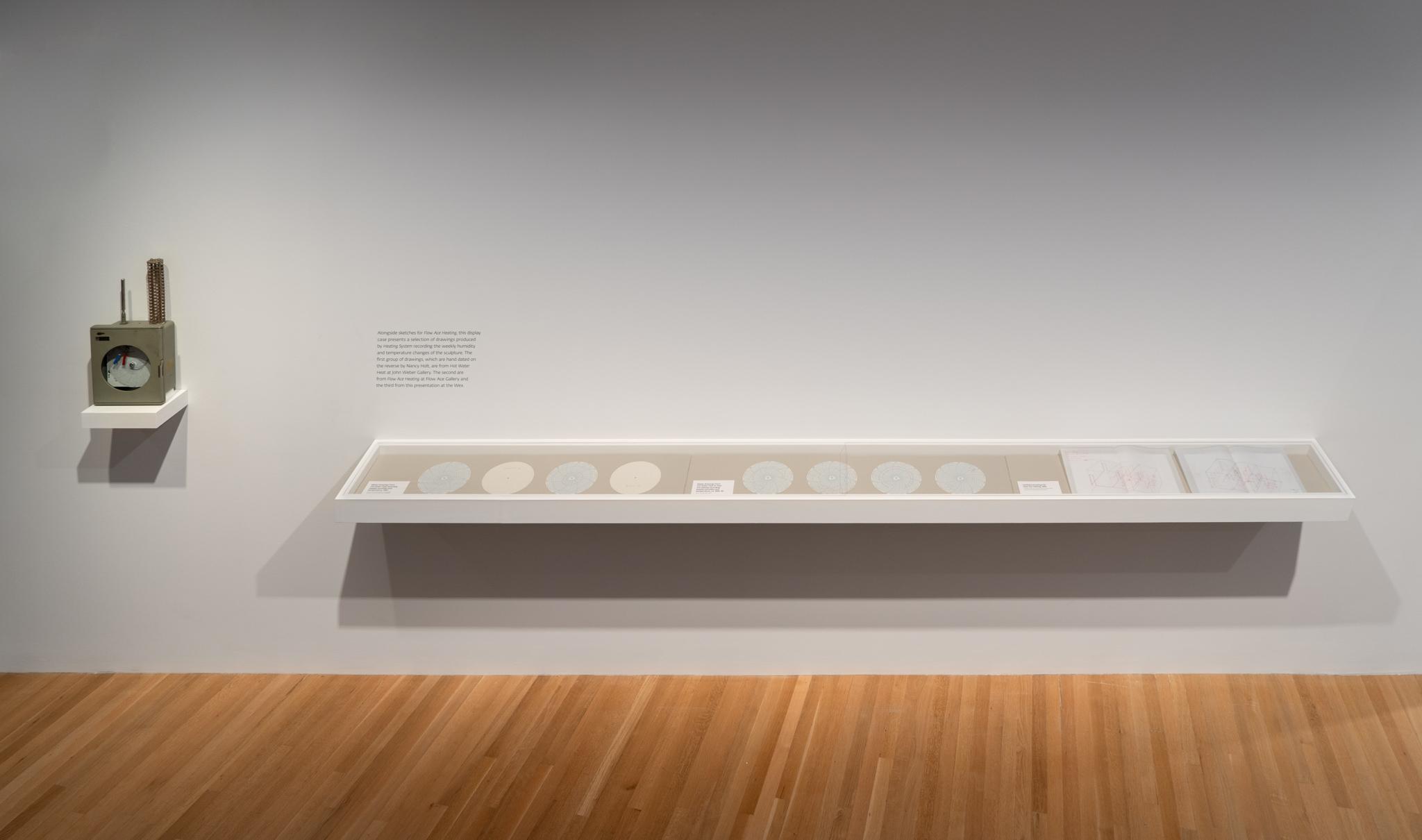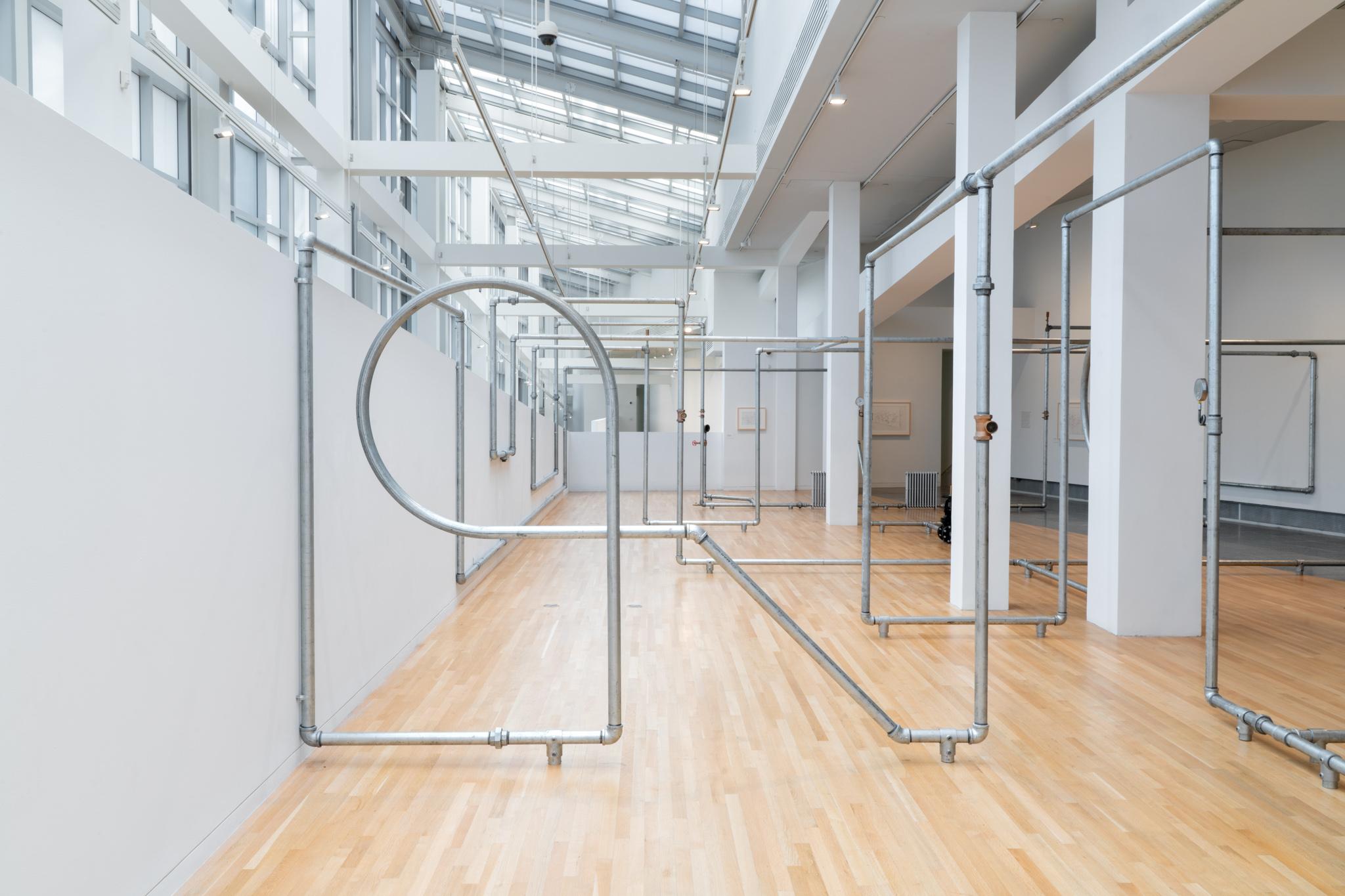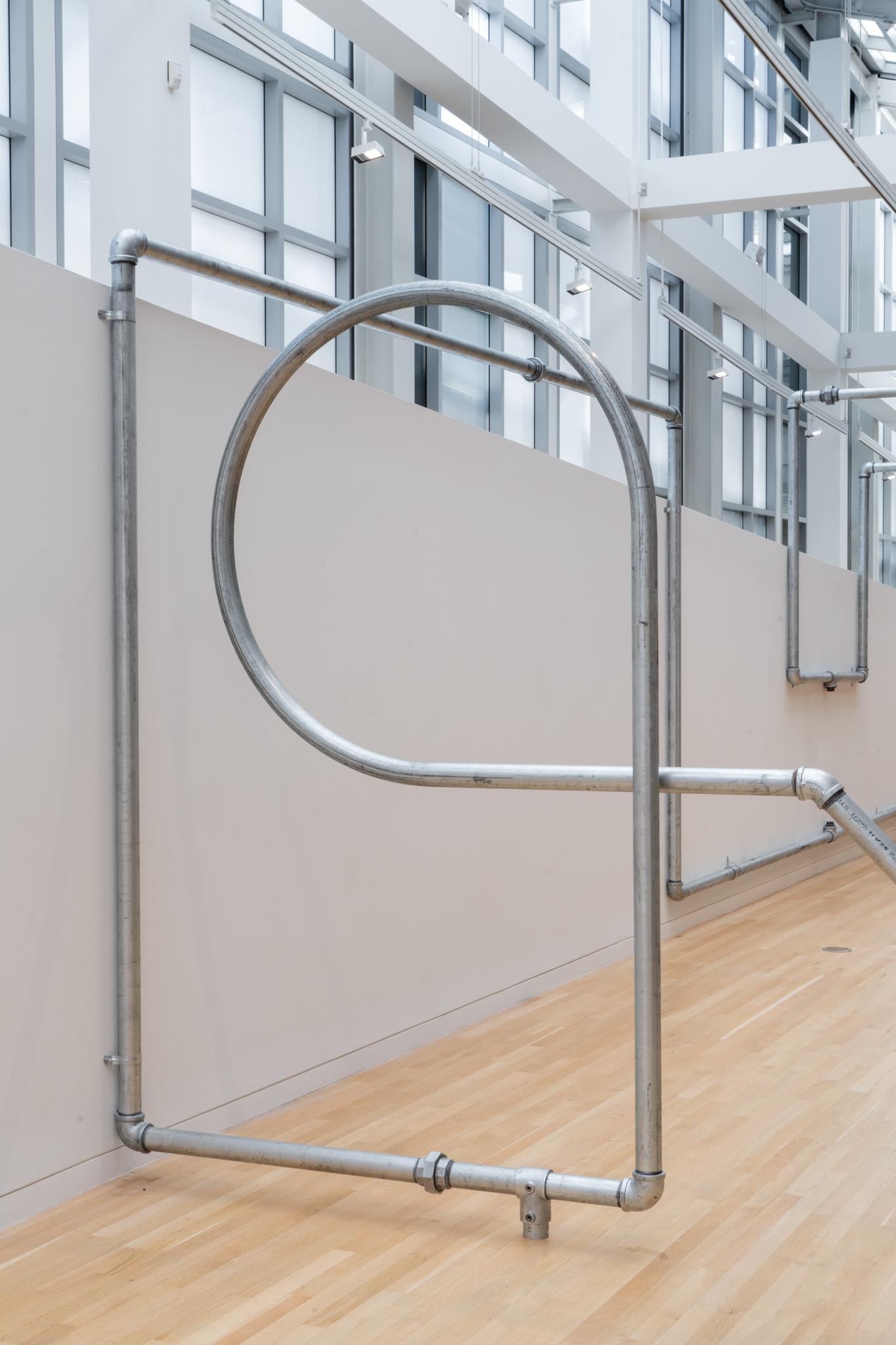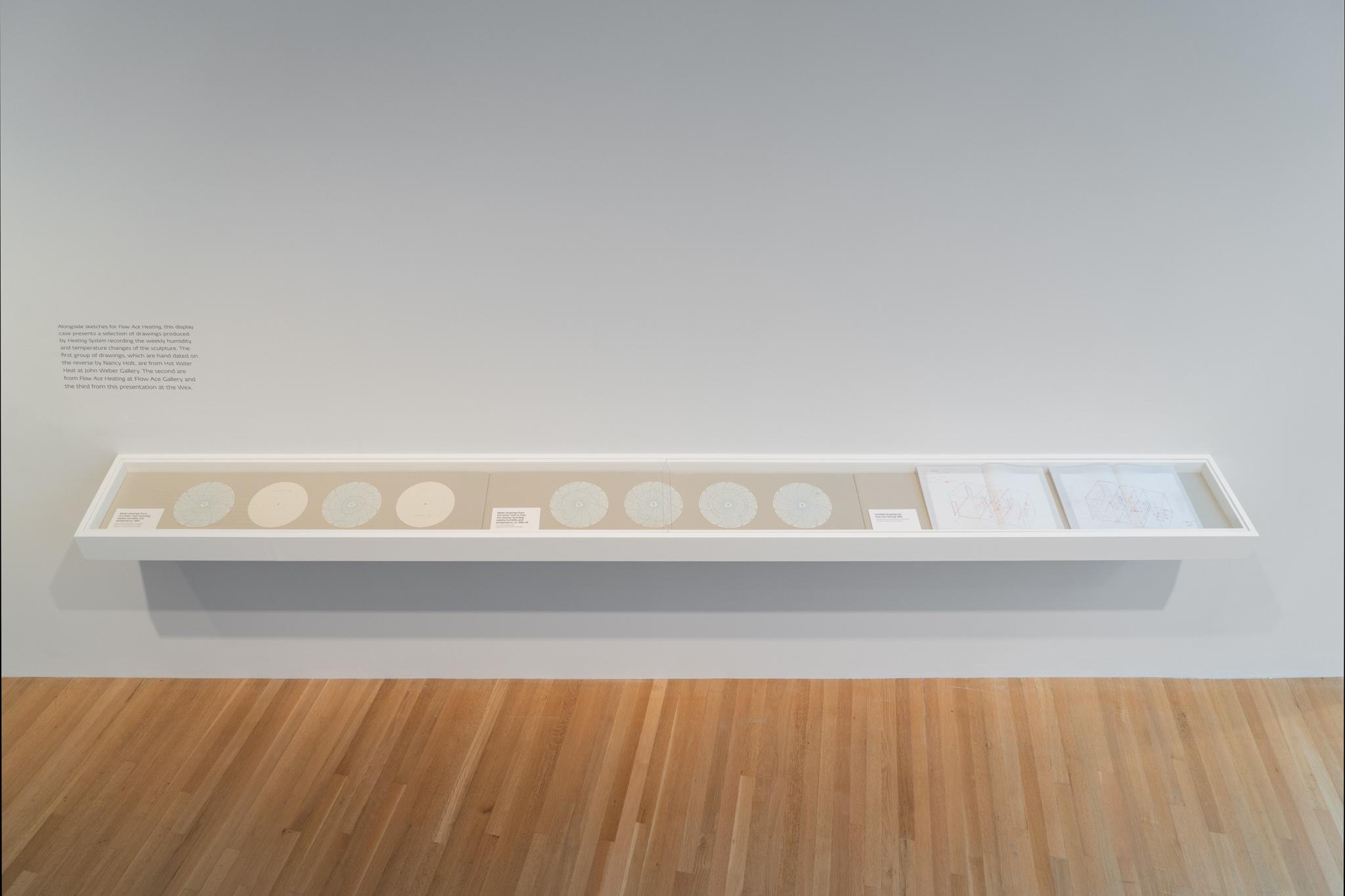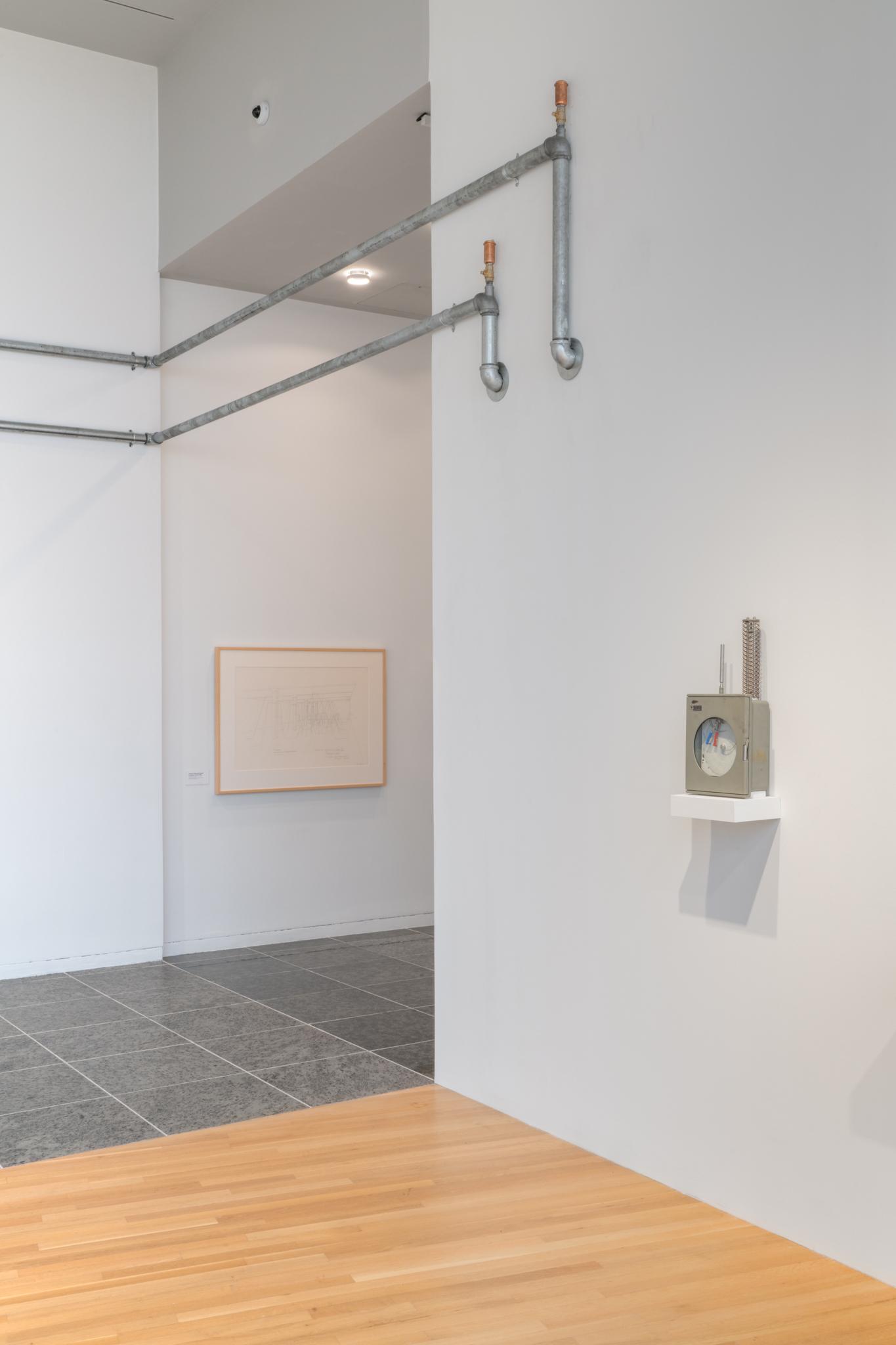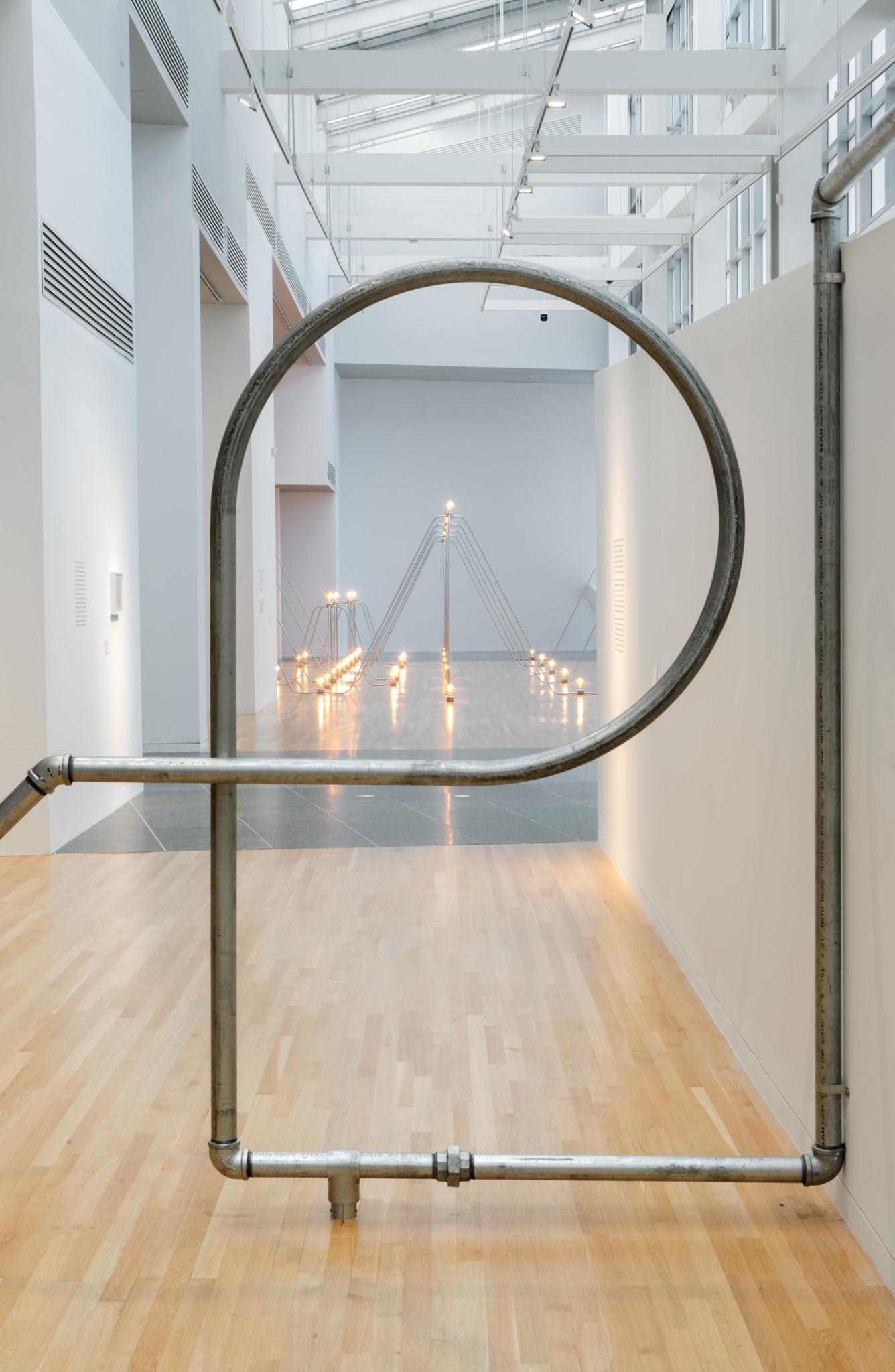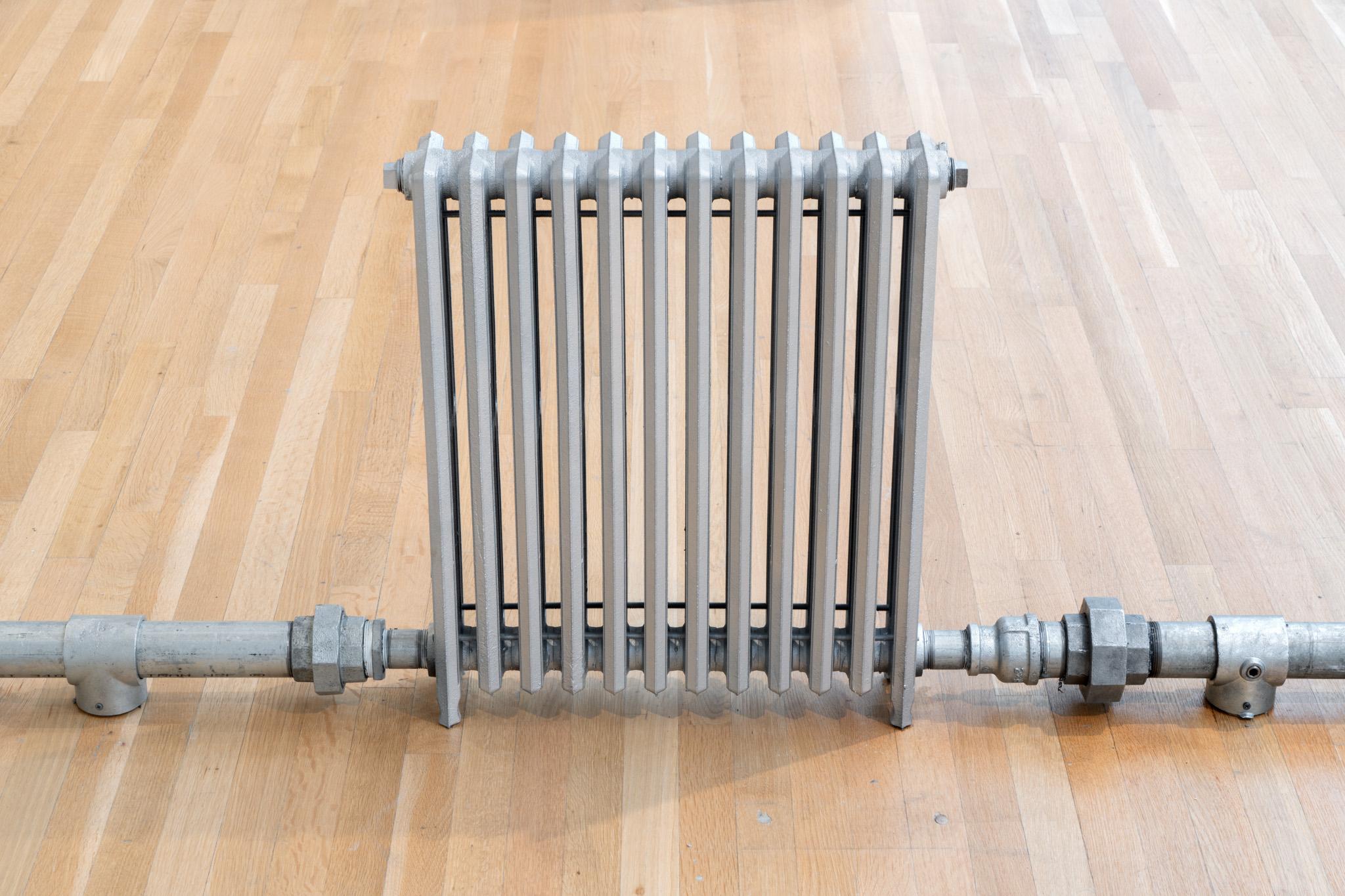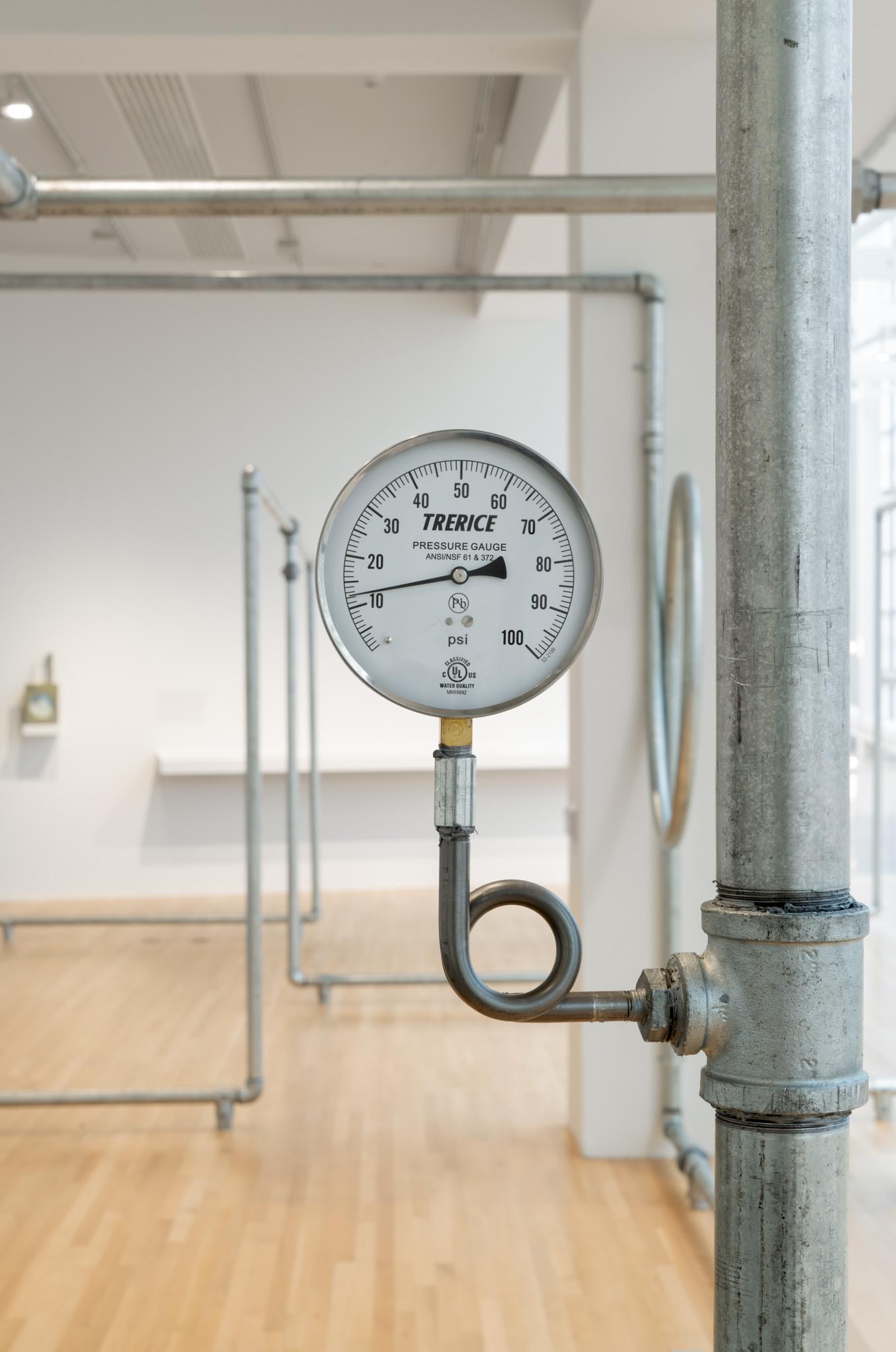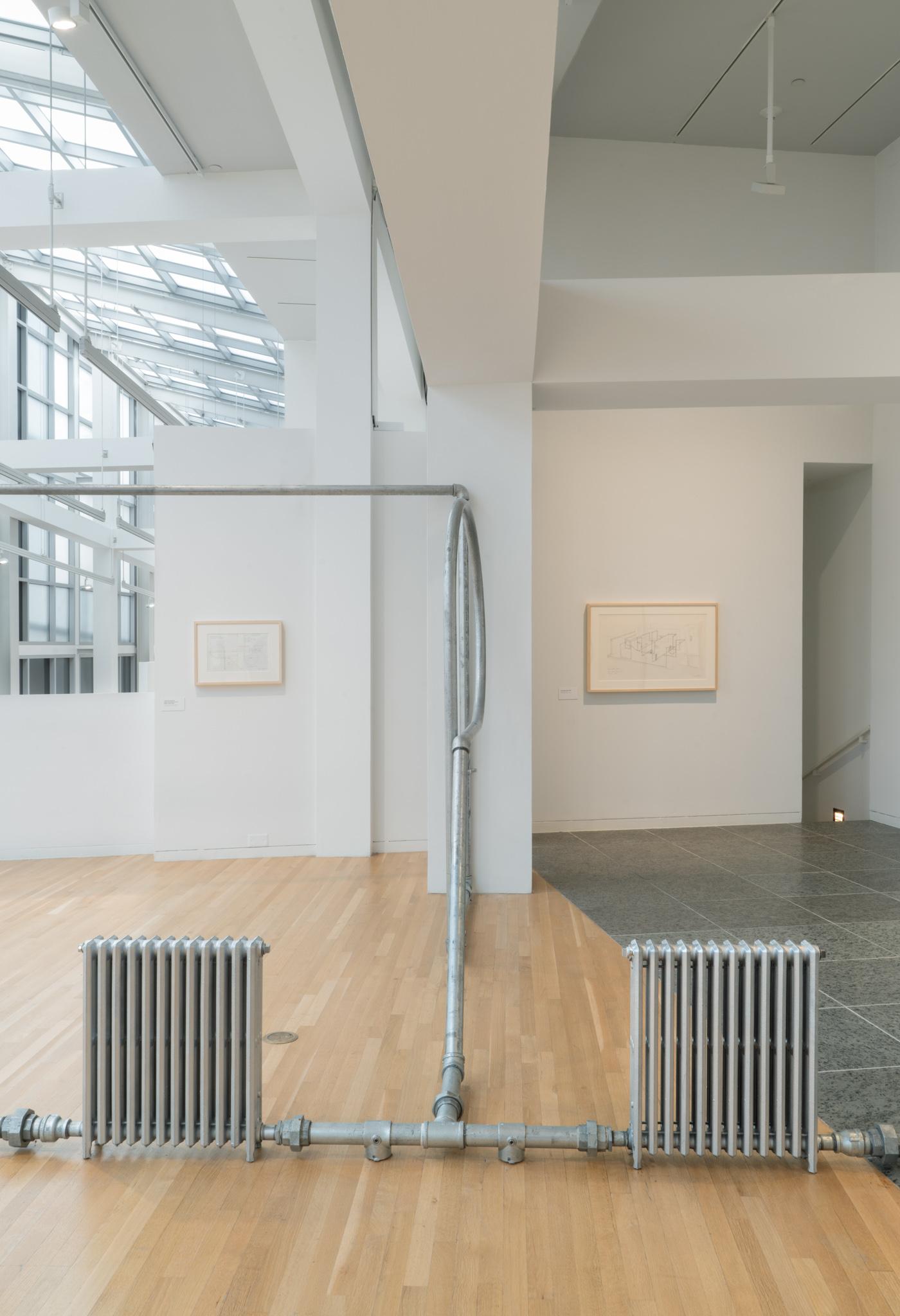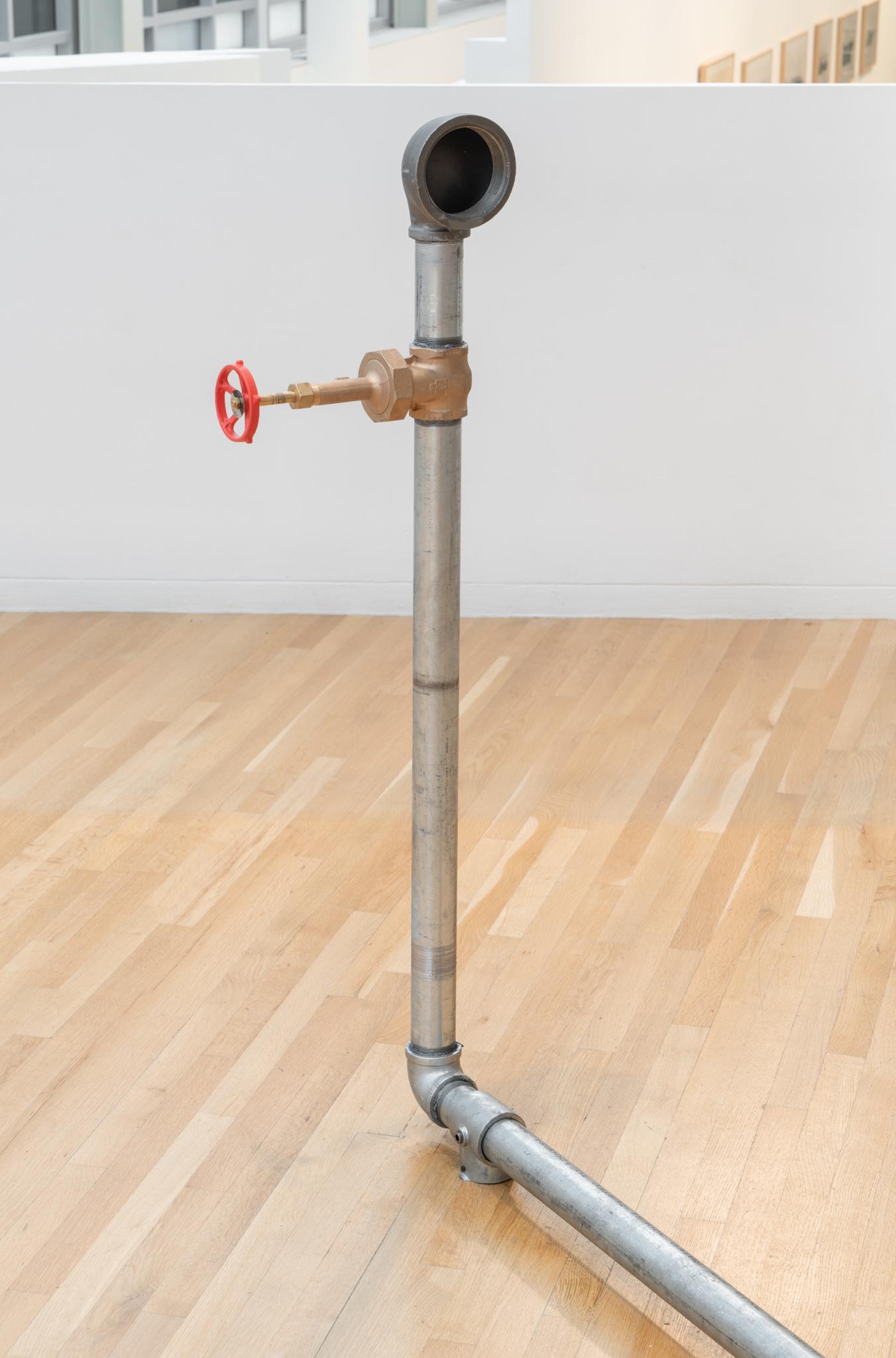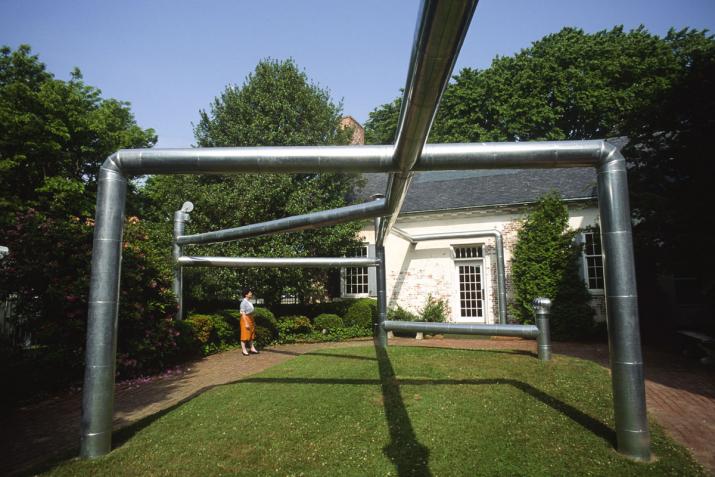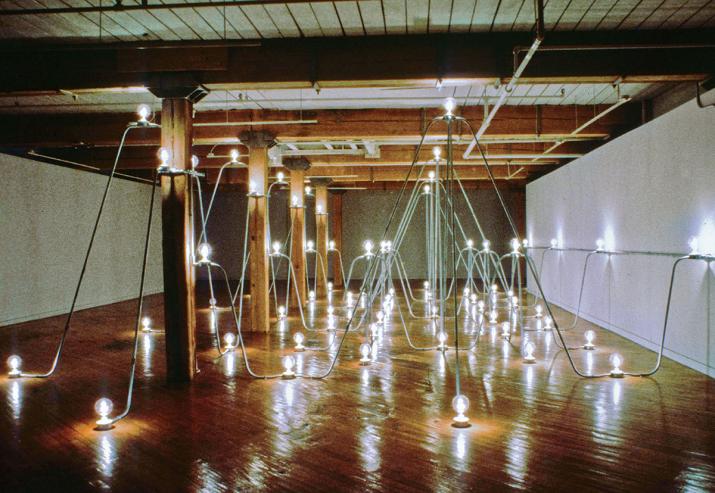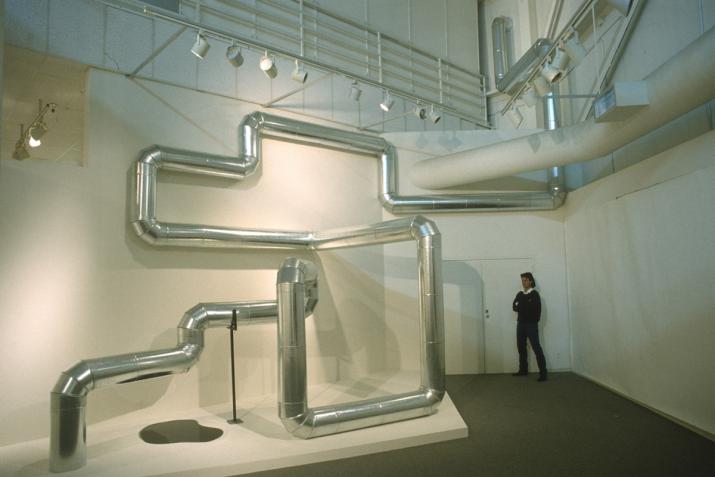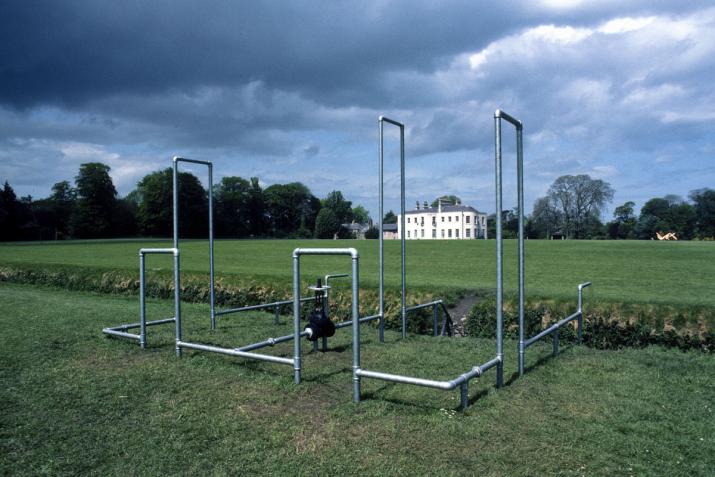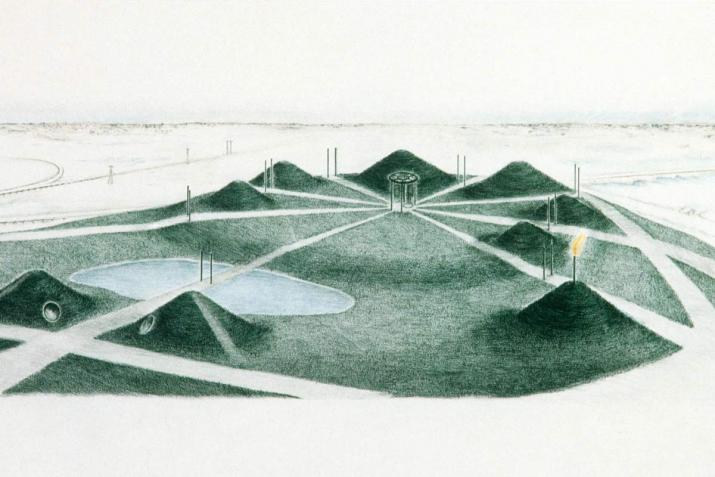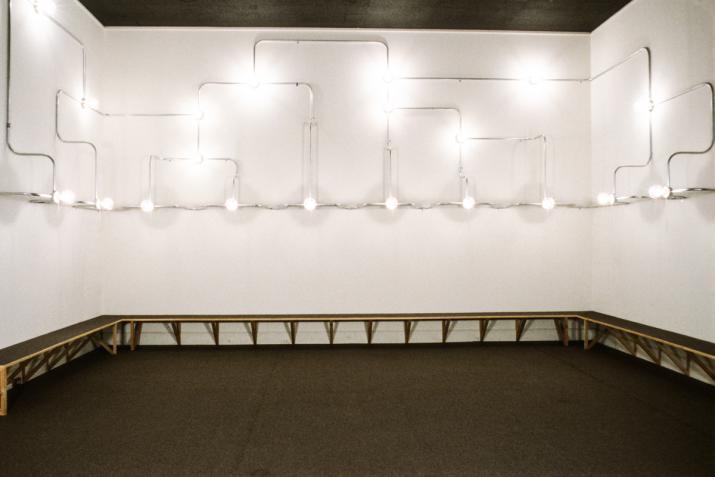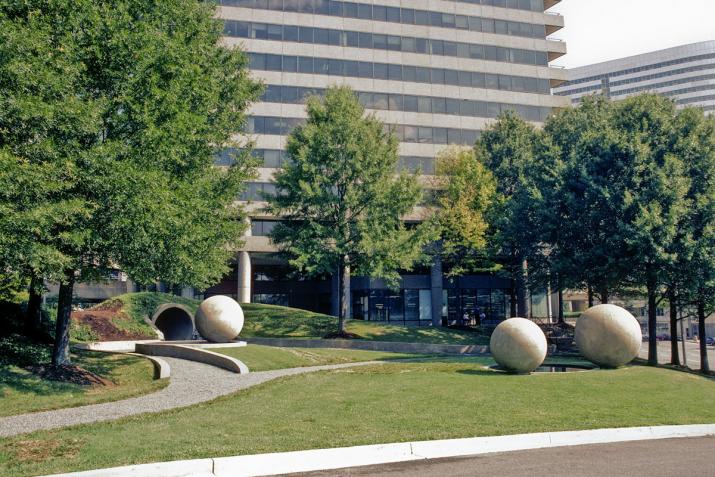Nancy Holt's Heating System belongs to a series she referred to as System Works: interactive site-responsive sculptural installations that expose the basic technological systems found in the built environment.
Holt wrote that her System Works are made of "standard materials of each system—plumbing, electricity, drainage, heating, gas, and ventilation—the sculptures are functional; the electrical systems light, the heating systems heat, the drainage systems drain, the ventilation systems circulate the air, and so on." Heating System uses standard hot water heating materials that expand from the infrastructure of the building, creating a sculptural system—and a heating system—that responds to the architecture of the exhibition space.
Steel pipes twist and loop around the exhibition space, punctuated by gauges and radiators, with a valve wheel at the structure’s center. Visitors are invited to turn this wheel, enabling them to have control over the flow of hot water through the pipes, and thus the temperature of the room. Inside the exhibition space a gauge on the wall records changes in temperature and humidity in red and blue ink on a piece of graph paper, meaning "the sculpture produced its own drawing, which I thought was an interesting idea."
Nancy Holt presented her Heating System works twice in her own lifetime: first at the John Weber Gallery in New York City in 1984, where she used the title Hot Water Heat, and secondly at Flow Ace Gallery in Los Angeles in 1985, where she named this iteration Flow Ace Heating. Reflecting on these works in 2010 she noted “although Hot Water Heat and Flow Ace Heating are very physical and made of steel, their conceptual and social dimensions are just as significant.”
Holt’s System Works include Electrical System (1982), Ventilation System (1985-92), and Pipeline (1986) . She described in a 1992 essay how “the sculptures are exposed fragments of vast, hidden networks, they are part of open-ended systems, part of the world."
Each work in this series brings elements of the outside world inside, pointing to the intersection of art, nature, and technology. In Heating System Holt harnesses the energy of the earth, in the same way any heating system would, to raise awareness of the way these systems are tied to forms of power and are both "necessary for our everyday existence, yet they are usually hidden behind walls or beneath the earth and relegated to the realm of the unconscious. We have trouble owning up to our almost total dependence on them.”
